Sites: news | india | latam | brasil | indonesia
Feeds: news | india | latam | brasil | indonesia
topic: Deep Sea
Social media activity version | Lean version
Twilight zone fishing: Can we fish the ocean’s mesopelagic layer?
- Fishing experts are looking for ways to fish in the mesopelagic zone, a layer of water that stretches from 200-1,000 meters (660-3,300 feet) beneath the surface, which has, thus far, remained relatively unexploited.
- Many challenges stand in the way of making mesopelagic fishing a reality, such as the difficulties of finding and capturing mesopelagic fish, and processing them into usable products.
- Yet experts are working to overcome these obstacles, with one suggesting that mesopelagic fishing could begin in the next few years.
- Conservation experts have expressed concern about the possible start of mesopelagic fishing, arguing that it could cause environmental problems.
No protection from bottom trawling for seamount chain in northern Pacific
- A recent meeting of the intergovernmental body that manages fisheries in the North Pacific Ocean failed to confer new protections for the Emperor Seamount Chain, a massive and richly biodiverse set of underwater mountains south of the Aleutian Islands.
- Bottom trawlers plied the Emperors aggressively in the past, decimating deep-sea coral communities and fish stocks.
- A proposal by the U.S. and Canadian delegations at the meeting of the North Pacific Fisheries Commission (NPFC) would have temporarily paused the limited trawling that continues there today, but failed to reach a vote.
- The NPFC did pass a separate proposal to regulate fishing of the Pacific saury (Cololabis saira), a severely depleted silvery fish that Japanese people traditionally eat in the fall.
Japan prepares to mine its deep seabed by decade’s end
- Japan is one among just a handful of nations actively pursuing deep-sea mining within its own waters.
- The country aims to be ready to mine by the late 2020s and could be among the first nations to exploit the deep sea.
- The country has completed multiple small-scale mining tests that it claims are world firsts, and it positions itself as a global leader in the “sustainable development” of deep-sea mining.
- However, concerns about the environmental impacts of deep-sea mining have prompted widespread opposition to the practice, and one critic notes that Japan’s momentum may be too great to stop for any warning signs its research might raise.
‘High Seas Treaty’ name is inaccurate and should center biodiversity (commentary)
- A new ocean governance treaty, formally called the “Agreement under the United Nations Convention on the Law of the Sea (UNCLOS) on the conservation and sustainable use of marine biological diversity of areas beyond national jurisdiction” (BBNJ) was agreed to by the international community in 2023.
- As the negotiations wound down, a rebranding effort began, which dubbed the new agreement the ‘High Seas Treaty,’ which is not accurate and omits the most important term, biodiversity, but it’s not too late to re-think, re-frame, and re-name the agreement.
- “Calling it the High Seas Treaty was a choice, but there are better options, which are more accurate and do not bias the interpretation of the agreement…we argue that the shorthand should contain the word biodiversity,” say the authors of a new commentary.
- This post is a commentary. The views expressed are those of the authors, not necessarily Mongabay.
Annual South Pacific fisheries meeting nets bottom trawling controversy
- The annual conference of the South Pacific Regional Fisheries Management Organisation (SPRFMO), an intergovernmental body, took place in Manta, Ecuador, between Jan. 29 and Feb. 2.
- SPRFMO, which manages fisheries across the vast international waters of the South Pacific Ocean, made key decisions on bottom trawling, labor rights, observation of squid-fishing vessels and transshipment at sea, a practice that can obscure the origin of illegally caught seafood.
- In what was perhaps the most controversial outcome of the meeting, delegates failed to adopt a proposal to complete the implementation of rules passed last year that would have limited bottom trawling of vulnerable marine ecosystems, such as coral communities.
EU parliament expresses disapproval of Norway’s deep-sea mining plans
- On Feb. 7, members of the European Parliament voted in favor of a resolution that raises concerns about Norway’s intentions to begin deep-sea mining activities.
- Although the resolution doesn’t hold any legal power, experts say it sends a strong signal to Norway that it doesn’t have the European support it may be relying on.
- Norway’s foreign ministry said that it has taken note of the resolution, adding that, like its European partners, it is committed to “sustainable ocean management.”
- In January, Norway voted to allow deep-sea mining exploration to commence in its waters.
‘Really a sad day’ as Norway votes to allow deep-sea mining in Arctic waters
- Norway’s parliament has voted to allow deep-sea mining to commence in the Norwegian Sea, a move that has garnered criticism from scientists and environmentalists.
- While the Norwegian government insists that it can conduct deep-sea mining in a sustainable way, critics say these activities will put marine ecosystems and biodiversity at risk.
- Norway will open a 281,000-square-kilometer (108,500-square-mile) area of the ocean for deep-sea mining, which mostly falls along its continental shelf.
In reversal, Mexico calls for moratorium on international deep-sea mining
- On Nov. 21, Mexico became the latest nation to call for a moratorium on deep-sea mining in international waters.
- Before this announcement, some Mexican delegates to the International Seabed Authority, the UN-associated body tasked with regulating the activity, had expressed support for fast-tracking mining rules that would enable mining to start.
- This announcement came two weeks after member states of the ISA met to work on a set of regulations, which are currently far from complete.
- While calling for a moratorium on seabed mining in international waters, it remains unclear if Mexico will allow deep-sea mining in its own waters; there are several mining concessions in the Bay of Ulloa, off the coast of Baja California.
Galápagos waters yield massive deepwater corals in latest biodiversity find
- Researchers have found two new deepwater coral reefs, including one that spans more than 800 meters, or half a mile long, in the waters around the Galápagos Islands.
- They were discovered through the process of mapping the seafloor in Galápagos Marine Reserve with laser scanning technology.
- The reefs displayed a diversity of stony coral species and other organisms such as crustaceans, sharks and skates.
- The discovery of these two reefs occurred six months after the first discovery of deepwater reefs in the waters of the Galápagos Islands.
Climate refugees? As the sea warms, corals thrive in Japan’s cool waters
- As tropical and subtropical coral reefs succumb to bleaching due to climate change in many parts of the world, the idea that they could take refuge in cooler, temperate seas has offered cause for hope.
- For a while, this is exactly what researchers thought was happening in Japan, where corals are replacing seaweed as the dominant benthos in many places, shaking up both ecosystems and coastal economies.
- But the latest research has tempered those hopes, showing that it’s mainly Japan’s genetically distinct temperate corals that have been expanding their range and edging out seaweed.
- The long-term implications of this shift are unclear, but researchers say it could take tens of thousands of years for these new high-latitude coral communities to evolve the structures, niches and symbioses necessary to support biodiversity on par with the world’s current tropical reefs.
Seventy-plus nations sign historic high seas treaty, paving way for ratification
- As of Sept. 22, 76 nations and the European Union had signed the high seas treaty while gathered at the 78th U.N. General Assembly in New York.
- After signing the treaty, each nation must ratify it. Then, once 60 nations have ratified the treaty, it will come into force after 120 days.
- The high seas encompass two-thirds of the world’s oceans, but only 1% currently has protected status.
Hope, but no free pass, as Pacific corals show tolerance to warming oceans
- New research suggests that coral reefs in the Pacific islands of Palau are becoming increasingly tolerant to thermal stress brought on by climate change.
- The study found that Palau’s coral reefs appeared to suffer less bleaching over three successive marine heat waves in 1998, 2010 and 2017.
- While the findings provide some hope for coral reefs, one expert says the study has some limitations in providing a clear picture of how corals respond to different heat events.
- Scientists also say that reducing carbon emissions is essential to safeguard coral reefs — and to secure the planet’s future.
To protect the oceans, we must map them (commentary)
- About 80% of our oceans remain “unmapped, unobserved, and unexplored,” according to NOAA.
- Technologies like un-crewed marine drones, high-resolution satellites, and remote operating vehicles are now being paired with modern digital mapping techniques to reveal critical new insights about the oceans.
- “Considering we’ve barely mapped a quarter of [the oceans] so far, imagine what we could know, what we could prepare for, if every inch was mapped,” a new op-ed suggests.
- This article is a commentary. The views expressed are those of the author, not necessarily Mongabay.
‘The deep sea is vital to protect the ocean’: Q&A with France’s Hervé Berville
- In November, France took a strong position on deep-sea mining by declaring that this future activity should be banned in international waters. The nation has also banned it from its national waters.
- Berville also said he wants to make sure there is a “coalition in favor of a principle of precaution or moratorium.”
- Member states of the International Seabed Authority, the UN-associated mining regulator, recently agreed to push back its timeline for finalizing rules that would enable deep-sea mining to start.
- Mongabay’s Elizabeth Claire Alberts interviewed Berville at the French Embassy in Kingston, Jamaica, during the meeting of the ISA assembly in July.
Calls grow to put the brakes on deep-sea mining as countries discuss rules
- Deep-sea mining is facing growing opposition from various countries, including Canada, Sweden, Ireland and Switzerland, as well as the U.N. human rights chief and a major seafood industry group.
- On July 10, the International Seabed Authority (ISA), the U.N.-associated deep-sea mining regulator, began a set of highly anticipated meetings in Kingston, Jamaica, to discuss adopting mining regulations.
- Commercial deep-sea mining has not yet begun. One firm previously said it intended to apply for a mining license later this year, adding urgency to the discussions.
- Mining companies say it’s necessary to mine the deep sea to extract minerals for renewable technologies; scientists and other experts say seabed minerals aren’t required for these technologies, and this mining could cause irreparable damage to the marine environment.
Deep-sea expedition reveals rare octo-nurseries off Costa Rica
- A scientific expedition in June found two new deep-sea octopus nurseries on two different low-temperature hydrothermal vent sites off the west coast of Costa Rica — two of only three known deep-sea octopus nurseries in the world.
- On a previous expedition in 2013, scientists had found a group of brooding octopuses at one of these vents, but didn’t detect any babies. But in June 2023, scientists did find octopus babies.
- Researchers theorize that the brooding octopus are attracted to the rocks, warmth, or microbes at these sites.
New hope in the Mediterranean: Scientists find deep corals withstand heat waves
- Over the past decade, the Mediterranean Sea has experienced frequent, destructive marine heat waves that have impacted a diversity of marine life, including red gorgonians (Paramuricea clavata).
- In 2022, researchers launched “Noah’s Ark of the Deep,” an expedition to study the gorgonians in the western Mediterranean Basin. In April, the second mission of the expedition explored gorgonians below 50 meters (164 feet).
- While the gorgonians in shallow waters suffered as temperatures rose, corals in deeper waters appeared untouched by the impacts of thermal stress.
- Researchers are currently trying to understand if these deeper gorgonians can help repopulate shallow populations if climate conditions allow them to regenerate.
Europe’s top science panel supports call for moratorium on deep-sea mining
- The European Academies’ Science Advisory Council has announced its support for a moratorium on deep-sea mining.
- In a new report, the council conveys its skepticism that deep-sea mining is necessary to meet the needs of critical minerals for renewable technologies.
- It also points out that deep-sea mining would cause irreparable harm to marine ecosystems, and that the mining regulator lacks a scientific definition of what qualifies as serious harm.
- Many European nations and companies currently possess licenses to explore the international seabed for resources, although exploitation has yet to begin.
Seafloor life abounds around hydrothermal vents hot enough to melt lead
- A team of international scientists on board the RV Falkor (too), a research vessel operated by the Schmidt Ocean Institute, recently discovered active hydrothermal vents on the Mid-Atlantic Ridge.
- This discovery was the first in more than 40 years for a 700-kilometer (423-mile) stretch of the Mid-Atlantic Ridge.
- Researchers say hydrothermal vents help regulate global ocean chemistry, support complex ecosystems, and store vast amounts of marine genetic resources.
- However, there is already interest in mining the sulfide deposits of hydrothermal vent systems for their commercially valuable minerals.
Norway proposes opening Germany-sized area of its continental shelf to deep-sea mining
- Norway has proposed opening up a Germany-sized part of the Norwegian Sea to deep-sea mining.
- The area holds considerable quantities of minerals needed for renewable energy technologies, such as magnesium, cobalt, copper, nickel and rare-earth metals.
- The Norwegian government and industries say they will take a precautionary approach to this deep-sea mining.
- However, critics say plans should be progressing more slowly to properly assess the marine environment and the possible impacts of mining, and the Norwegian government received numerous responses during a public consultation period arguing that the country should not mine its deep sea.
As U.N. members clinch historic high seas biodiversity treaty, what’s in it?
- On March 4, U.N. member states reached a landmark agreement on a legally binding treaty aimed at protecting the international waters of Earth’s oceans.
- The deal, more than 15 years in the making, was finalized after talks overran their two-week schedule into a final, grueling 36-hour negotiation marathon.
- Delegates reached consensus on multiple thorny matters, including a framework for establishing and maintaining a network of marine protected areas on the high seas and mechanisms to share benefits from high seas resources fairly among nations.
- For the new high seas treaty to be implemented, delegates must officially adopt the treaty text at an unscheduled next meeting, and then a minimum of 60 states must ratify it, a process that could take months or years.
Will new bottom trawling rules do enough to protect South Pacific seamounts?
- The South Pacific Regional Fisheries Management Organisation (SPRFMO) is an intergovernmental body that regulates fishing across the vast international waters of the South Pacific Ocean.
- At a meeting in Manta, Ecuador, in February, the SPRFMO changed its rules around bottom trawling, a controversial fishing practice that involves dragging fishing gear along the seabed, running roughshod over any organisms or structures in its path.
- The new rules mandate the protection of at least 70% of species that indicate the presence of so-called vulnerable marine ecosystems, such as sponge fields and cold-water coral communities.
- However, conservationists have decried the new rules, calling them less protective than the current policy, let alone the ban on trawling seamounts they’ve been asking for.
Experts pushing for high-seas fishing ban win ‘Nobel Prize for environment’
- Fisheries experts Daniel Pauly and Rashid Sumaila have won the 2023 Tyler Prize for Environmental Achievement, an award administered by the University of Southern California.
- The prize has been referred to as the “Nobel Prize for the environment” and comes with a $250,000 award to be shared between the two laureates.
- Both Pauly and Sumaila have said they would like to use the prize opportunity to spread the message that it’s necessary to ban all fishing on the high seas, those parts of the ocean that don’t fall under any national jurisdiction.
Democratizing the deep sea: Q&A with Ocean Discovery League’s Katy Croff Bell
- The current expense of studying the deep seas stymies many research initiatives, so scientists have developed a low-cost imaging and sensor device to make access to the deep sea more equal.
- Developed using off-the-shelf hardware, “Maka Niu” can capture images and collect data on temperature and salinity down to a depth of 1,500 meters, or nearly a mile.
- Scientists in countries like the Maldives, Seychelles and South Africa are now deploying prototypes to provide feedback for the final product.
France’s Macron joins growing chorus calling for deep-sea mining ban
- On Nov. 8, French President Emmanuel Macron became the first head of state to call for a complete ban on deep-sea mining, an activity that would extract industrial quantities of minerals from the seabed in international waters in the near future.
- Delegates of the International Seabed Authority (ISA) are currently meeting in Kingston, Jamaica, to discuss deep-sea mining regulations, and many member states are using this forum to express their concerns about mining going ahead.
- In June 2021, the Pacific island nation of Nauru, which sponsors Nauru Ocean Resources Inc. (NORI), a subsidiary of Canadian firm The Metals Company (TMC), triggered a “two-year rule” that could force the ISA to allow mining to go ahead in two years with whatever regulations are in place.
New Zealand convicts company of illegal trawling in high seas restricted area
- In late August, a court in Aotearoa New Zealand convicted a subsidiary of one of the country’s major seafood companies of illegal trawling in a closed area in the Tasman Sea between New Zealand and Australia.
- The judge fined the company NZ$59,000 (about $33,000) and the skipper NZ$12,000 (about $7,000), and seized the vessel.
- It’s the fourth case in the past five years where courts convicted New Zealand-flagged vessels of illegal trawling.
- The recent conviction comes amid an ongoing debate about trawling in New Zealand, with campaigners calling for a ban on bottom trawling on submarine mountains, and the industry disputing their arguments and resisting aspects of the proposed change.
Deep dive uncovers previously unknown underwater ecosystem in Maldives
- Scientists recently identified a previously undiscovered marine ecosystem in the waters around the Maldives, known as the “trapping zone,” about 500 meters (about 1,600 feet) below the surface.
- The researchers say the trapping zone refers to a region of subsea vertical cliffs and shelving terraces that “trap” small, migrating mesopelagic organisms, which attract pelagic predators like sharks, tuna and large fish.
- Prior to this mission, very little was known about the Maldivian sea below 30 m (about 100 ft), despite the country’s total area consisting 99% of water.
- The researchers say trapping zones likely exist in the waters around other oceanic islands with similar topography, and that they’re already gathering evidence of such an ecosystem in the waters of the Chagos archipelago, south of the Maldives.
Fish return to Southern Brazil after trawling ban
- Small- and large-scale fishers report an increase in the volume and variety of fish species in the Patos Lagoon and the coast of Rio Grande do Sul state.
- Such abundance came after a bill banning motorized trawling on the state’s coast was passed and signed into law in 2018.
- Drafted by fishers and scientists and passed unanimously in the state parliament, the law goes against the interests of President Bolsonaro’s allies.
- Appointed to the Federal Supreme Court by Bolsonaro, Justice Kassio Nunes Marques overturned the Court’s prevailing view and suspended the effects of a previous ruling. On a date yet to be scheduled, the Court’s plenary session will have the final word.
Europe moves to protect deep-sea sites in Atlantic from bottom fishing
- The European Commission recently announced that it will protect 16,000 square kilometers (6,200 square miles) of the deep sea — known as “vulnerable marine ecosystems” — in EU waters in the northeast Atlantic Ocean by prohibiting bottom fishing in these areas.
- This move is a key component to the Deep-Sea Access Regulation, a plan adopted by the EC in 2016 to protect deep-sea environments in EU waters. However, the regulation stipulated that vulnerable marine ecosystems should be protected by 2018, so its implementation comes four years late.
- The fishing sector has warned that this move will threaten the future of bottom fishing and impact more than 10,000 fishers.
- Conservation experts have welcomed this announcement, despite its lateness, saying that such a move is essential in protecting fragile and ecologically important deep-sea environments.
Regulator approves first deep-sea mining test, surprising observers
- The International Seabed Authority (ISA), the intergovernmental body responsible for overseeing deep-sea mining operations and for protecting the ocean, recently granted approval for a mining trial to commence in the Clarion-Clipperton Zone (CCZ) in the Pacific Ocean.
- The company undertaking this trial is Nauru Ocean Resources Inc (NORI), a subsidiary of Canadian-owned The Metals Company (TMC), which is aiming to start annually extracting 1.3 million metric tons of polymetallic nodules from the CCZ as early as 2024.
- The approval for this mining test, the first of its kind since the 1970s, was first announced by TMC earlier this week.
- Mining opponents said the ruling took them by surprise and they feared it would pave the way for exploitation to begin in the near future, despite growing concerns about the safety and necessity of deep-sea mining.
Greenland’s sustainable halibut fishery may threaten newfound corals, sponges
- Industrial trawling for halibut in the Davis Strait off western Greenland is currently done in a certified sustainable manner, but new studies suggest it may be doing long-term harm.
- The studies describe assemblages of unique marine life on the seafloor both inside and near the halibut fishing zones that could potentially be considered “vulnerable marine ecosystems.”
- Scientists have called for protection of these potential VMEs, but acknowledge that ending bottom trawling altogether isn’t a viable option when fishing accounts for 93% of Greenland’s exports.
- Fishing industry stakeholders say they’re confident that existing rules designed to help the halibut fishery meet sustainability requirements will be sufficient to spare these potential VMEs, and point to a new management plan for the entire Greenlandic seabed that is in development as a way to strengthen protections.
Amid haggling over deep-sea mining rules, chorus of skepticism grows louder
- This week, the International Seabed Authority, the intergovernmental body tasked with overseeing deep-sea mining in international waters, concluded its recent set of meetings, which ran from July 4 to Aug. 4, 2022.
- The purpose of these meetings was to progress with negotiations of mining regulations, with a view that deep-sea mining will start in July 2023 after the Pacific island nation of Nauru triggered a rule that could obligate this to happen.
- While many countries appear to support the rapid development of these regulations, an increasing number of other countries have expressed concern with this deadline, indicating a possible turn of events.
‘We’ve got to help the oceans to help us’: Q&A with deep-sea explorer Dawn Wright
- On July 12, oceanographer and geographer Dawn Wright descended 10,919 meters (35,823 feet) below the surface of the ocean to the deepest known part of the planet, Challenger Deep, alongside deep-sea explorer Victor Vescovo.
- Wright was the first Black person to make the voyage to Challenger Deep, where she and Vescovo documented several findings, including the discovery of a beer bottle on the seabed.
- The goal of the expedition was to test out a side-scan sonar designed to go down to 11,000 m (nearly 36,100 ft) that can take detailed images of the seafloor, which was successfully achieved.
- Mongabay’s Elizabeth Claire Alberts spoke to Wright before and after her expedition to learn more about the voyage’s personal significance to Wright, the challenges in venturing this far down into the ocean, and the significance of understanding more about the deep-sea.
Concerns over transparency and access abound at deep-sea mining negotiations
- Delegates to the International Seabed Authority (ISA), the U.N.-mandated body responsible for overseeing the development of deep-sea mining in international waters and protecting the ocean, are currently meeting in Kingston, Jamaica, to negotiate a set of regulations that would determine how deep-sea mining can proceed.
- Scientists and conservationists say there are many transparency issues at the current meetings, and that the ISA has restricted access to key information and hampered interactions between member states and civil society.
- However, the ISA has stated that it’s committed to transparency and that attendees have full access to the discussions.
- Deep-sea mining could begin in as little as a year with whatever regulations are currently in place.
‘The sea means everything’: Q&A with deep-sea mining opponent Debbie Ngarewa-Packer
- New Zealand parliamentarian and Māori activist Debbie Ngarewa-Packer has spent more than two decades serving in leadership roles, using her positions to advance social justice issues and to campaign for the protection of the marine environment.
- A key issue that Ngarewa-Packer is currently working on is a push to ban deep-sea mining in the global ocean, a proposed activity that would extract large amounts of minerals from the seabed.
- Ngarewa-Packer previously worked with other Māori activists, NGOs and community members to block consent for a deep-sea mining operation in her home district of South Taranaki on New Zealand’s North Island.
- In an interview with Mongabay, Ngarewa-Packer talks about why it’s critical to protect the deep sea from mining, what ancestral teachings say about protecting the ocean, and why she feels hopeful about the future.
A year before deep-sea mining could begin, calls for a moratorium build
- At the U.N. Ocean Conference taking place this week in Lisbon, momentum has been building in support of a moratorium on deep-sea mining, an activity projected to have far-reaching consequences for marine ecosystems, biodiversity, and global fisheries.
- The Pacific island nation of Palau launched an alliance of countries that support a moratorium, which Fiji and Samoa subsequently joined.
- A global network of parliamentarians has also banded together to support a moratorium and to look for a legal way to enforce it.
- As things stand, deep-sea mining could begin a year from now, with the International Seabed Authority, the body tasked with regulating the activity, drawing up the rules that would allow mining to commence.
How will climate change impact cold-water corals? Mostly through food loss, study says
- A new study warns that cold-water corals, also known as deep-water corals, could be most impacted by a decrease in food supply as climate change shifts the dynamics of the planet’s oceans.
- The authors came to this conclusion by examining how cold-water corals survived the last major period of global warming that occurred at the end of the last glacial period and the start of the current interglacial period, which is somewhat analogous to how the Earth is projected to warm by the end of this century.
- However, experts point out that cold-water corals today are subjected to a number of additional stressors, including ocean acidification, destructive fishing practices, and pollution, and that the climate is changing far more rapidly than it did in the past.
- Cold-water corals are considered to be equally important — or perhaps even more important — than tropical corals, which makes understanding their chances of survival of the utmost importance, researchers say.
Red seas and no fish: Nickel mining takes its toll on Indonesia’s spice islands
- Fishermen in Indonesia’s Obi Islands blame the nickel mining and smelting industries for the depletion of fish in their traditional fishing grounds.
- Researchers say the pollution has turned the coastal waters into a “mud puddle” because of the high levels of heavy metal contamination.
- One of the main mining companies there had previously proposed dumping 6 million tons of waste a year into the sea, but backed down following protests.
- The company is now proposing clearing a forest area to build a tailings dam — a plan that activists and fishermen say is no better because of the persistently high risk of environmental contamination.
2021’s top ocean news stories (commentary)
- Marine scientists from the University of California, Santa Barbara, share their list of the top 10 ocean news stories from 2021.
- Hopeful developments this year included big investments pledged for ocean conservation, baby steps toward the reduction of marine plastic pollution, and the description of two new whale species, Rice’s whale (Balaenoptera ricei) and Ramari’s beaked whale (Mesoplodon eueu).
- At the same time, rising ocean temperatures, a byproduct of climate change, had profound effects on marine species up and down the food chain, and action on key measures to maintain ocean resilience in the face of multiple threats hung in the balance.
- This post is a commentary. The views expressed are those of the authors, not necessarily Mongabay.
Deep-sea mining regulator’s latest meeting on rules only muddies the water
- Delegates of the International Seabed Authority (ISA), the multilateral body in charge of deep-sea mining in international waters, met recently in Kingston, Jamaica, and discussed whether to adopt a set of rules — or mining code — to allow deep-sea mining to commence in as little as 18 months.
- Deep-sea mining is a controversial activity that was pushed closer to the horizon when Nauru triggered a “two-year rule” that would theoretically require the ISA to grant an exploitation license within two years, no matter what mining regulations are in place.
- Most ISA member states appeared to be in favor of pushing forward with the mining code, but others questioned the feasibility of this approach, according to observers who attended the meetings.
- The ISA has a dual mandate to give nations equal opportunity and access to mine the seabed as well as to protect the ocean from mining’s harmful effects, but some experts say the ISA’s leadership holds favorable views of mining.
If marine noise pollution is bad, deep-sea mining could add to the cacophony
- A new report suggests that the noise pollution produced by deep-sea mining activities could have far-reaching effects on the marine environment, from surface to seafloor.
- While there are many studies that measure the impacts of noise pollution on marine life, more research is needed to fully understand how sound from deep-sea mining could affect the ocean.
- Due to the paucity of information, experts say a precautionary approach to deep-sea mining noise is required and that clear regulations must be put into place by the International Seabed Authority.
- While deep-sea mining has yet to begin, a subsidiary of Canada-based The Metals Company plans to start mining in less than two years.
New protections announced for Galápagos Islands and beyond at COP26
- Ecuador’s president announced on Nov. 1 an expansion of the existing Galápagos Islands marine reserve to encompass an additional 60,000 square kilometers (23,200 square miles).
- The majority of the addition would be established across the Cocos Ridge, which is an important migration route for species like hammerhead sharks and leatherback turtles.
- The following day, the presidents of Ecuador, Panama, Colombia and Costa Rica also announced that the four countries intended to create a large marine corridor between their four countries by extending and joining their current marine protected areas.
- Experts say that the new Galápagos marine reserve, in conjunction with the larger corridor, would help protect a range of migratory species.
Experts see no way back for NZ firm blocked from trying to mine the seabed
- The New Zealand Supreme Court recently blocked consent for a seabed mining operation that would annually extract 50 million tons of iron ore from the seabed off the coast of South Taranaki.
- Environmentalists see this decision as a clear victory, but the mining company has stated its intention to reapply for mining permission.
- But experts say it’s unlikely the company, Trans-Tasman Resources Limited (TTR), will be able to regain consent due to fundamental issues with its application, such as the distinct lack of baseline studies on resident marine life and the potential impacts of mining.
- Conservationists say seabed mining in this part of New Zealand would cause irreversible damage to the ecosystem and threaten many rare and endangered species.
‘Antithetical to science’: When deep-sea research meets mining interests
- The high cost of studying deep-sea ecosystems means that many scientists have to rely on funding and access provided by companies seeking to exploit resources on the ocean floor.
- More than half of the scientists in the small, highly specialized deep-sea biology community have worked with governments and mining companies to do baseline research, according to one biologist.
- But as with the case of industries like tobacco and pharmaceuticals underwriting scientific research into their own products, the funding of deep-sea research by mining companies poses an ethical hazard.
- Critics say the nascent industry is already far from transparent, with much of the data from baseline research available only to the scientists involved, the companies, and U.N.-affiliated body that approves deep-sea mining applications.
Deep-sea mining gets a resounding rejection from conservation authorities
- Members of the IUCN World Conservation Congress have voted overwhelmingly in support of a moratorium on deep-sea mining, an activity that conservationists say could cause irreversible damage to the ocean.
- The South Pacific nation of Nauru recently triggered a two-year rule, which would require the International Seabed Authority (ISA) to grant it a license to begin mining under whatever regulations are in place by then.
- Conservationists say there is currently little to no understanding of how deep-sea mining could negatively affect the deep-sea environment.
Drive toward green cars shouldn’t rely on mining seabed, conservationists say
- Conservationists are urging electric car and technology companies not to support or use resources derived from deep-sea mining, an activity that could potentially cause irreparable damage to the marine ecosystem in the process.
- The burgeoning electric car industry relies on a number of minerals for batteries, including lithium, manganese, nickel and cobalt, which are not easily accessible from terrestrial sources.
- Deep-sea mining proponents say that mining polymetallic nodules offers an alternative way to procure much-needed minerals for electric car batteries, but conservationists argue that the risks are too great to ignore.
- Instead of mining the deep sea, conservationists say that the focus should shift to developing electric car batteries that do not require hard-to-get minerals, improving terrestrial mining practices, and expanding battery recycling.
Canadian miner looms large as Nauru expedites key deep-sea mining rules
- Nauru, which sponsors a company to mine the seabed for minerals in ungoverned waters, has triggered a rule with the International Seabed Authority that requires it to allow seabed mining in two years, regardless of whether regulations have been written.
- Advocates have expressed concerns that the main beneficiary of the move is a Canadian company that is in the process of publicly listing its stock in the US, which is not governed by ISA regulations.
- Seabed mining has never been attempted before, and scientists worry that a shortened deadline to design regulations may sideline environmental protection in the world’s largest inhabited zone.
- Among the outstanding questions over regulations is the issue of royalties: how will sponsoring states and other countries benefit from the “common heritage of mankind”?
Seafloor microbes hoover up methane, keeping global warming in check
- A new study found that carbonate rock mounds on the ocean floor host communities of microbes that actively consume methane, a greenhouse gas that is particularly potent if released into the atmosphere.
- The researchers found that rock-inhabiting microbes consumed methane 50 times faster than microbes that live in sediment.
- These microbes therefore play a crucial role in regulating the Earth’s temperature by consuming methane before it travels up into the water column and into the atmosphere.
Nauru’s intention to mine the seabed prompts alarm among conservationists
- Nauru has notified the International Seabed Authority (ISA) that its sponsored entity, Nauru Ocean Resources Inc. (NORI), plans to commence deep-sea mining in two years’ time, triggering a two-year rule embedded in the U.N. Convention on the Law of the Sea.
- The ISA has yet to generate a mining code that would set out rules and regulations for deep-sea mining activities.
- Experts are concerned that the ISA will prematurely approve Nauru’s application and that deep-sea mining will commence before we fully understand the damage it could cause to biodiversity and ecosystems.
Study confirms sightings of endangered blue whale in Philippine waters
- For years, a group of scientists have been tracking a mysterious whale that they initially labeled as belonging to another blue whale subspecies.
- Their decade-long efforts resulted in a new study that confirms the species as an endangered pygmy blue whale — an animal last recorded in Philippine waters in the 19th century.
- Researchers call the pygmy blue whale “Bughaw,” a Filipino word for the color blue.
- They say Bughaw’s presence could help establish Philippine waters as part of the extended migration path of the Indo-Australian population of pygmy blue whales.
On the sea’s surface, a wealth of ocean life gets its start, study finds
- A new study found that surface slicks — moving patches of smooth water that form on the sea’s surface — host an array of species in larval form off the west coast of Hawaiʻi Island.
- The researchers identified more than 100 fish species from 54 families inside these slicks, representing 10% of all fish species ever recorded in Hawaiian waters.
- Surface slicks play a pivotal role in the marine ecosystem by providing food and shelter for larvae, and transporting them into different parts of the ocean.
- In addition to larvae, surface slicks accumulate large quantities of plastic, which has been found to be infiltrating the food chain.
Scientists discover three glow-in-the-dark sharks
- Researchers have discovered that three deep-sea shark species — the kitefin shark (Dalatias licha), the blackbelly lanternshark (Etmopterus lucifer), and the southern lanternshark (Etmopterus granulosus) — all have bioluminescent properties.
- The kitefin shark, which glows blue, is the largest known vertebrate to emit bioluminescence.
- Further research is needed to fully understand how and why these sharks emit light.
2020’s top ocean news stories (commentary)
- Marine scientists from the University of California, Santa Barbara, share their list of the top 10 ocean news stories from 2020.
- Hopeful developments this year included some long-overdue attention to Black and other underrepresented groups in marine science; new technologies to prevent deadly ship-whale collisions and track “dark” vessels at sea remotely; and surprising discoveries in the deep sea.
- At the same time, the COVID-19 pandemic resulted in more trash than ever being dumped in the sea, and stalled international negotiations aimed at protecting waters off Antarctica and in the high seas. 2020 also brought the first modern-day marine fish extinction.
- This post is a commentary. The views expressed are those of the authors, not necessarily Mongabay.
The crypto-creature from the deep: Researchers get rare video of bigfin squid
- Five squids from the Magnapinna genus, known as bigfins for their distinctive flappy fins, were spotted in deep-sea surveys over the course of three years off southern Australia.
- These cephalopods are usually found thousands of meters under the sea’s surface, in underexplored waters across the globe.
- To date, however, not a single adult specimen has been captured, and sightings are uncommon, making the newly obtained survey videos a rare window into their mysterious lives.
- Scientists believe that despite the remoteness of their habitats, these understudied creatures could still be susceptible to the impacts of a changing climate.
Podcast: Can the planet support a clean energy transition?
- Combating climate change will require rapidly deploying renewable energy while reducing our use of fossil fuels. But renewable energy technologies like wind turbines, solar panels, batteries, and electric vehicles require large amounts of mined metals and minerals.
- That poses a problem, because the mining process creates significant environmental impacts, from air and water pollution to deforestation, and has led to numerous conflicts with local communities. And now, there’s a concerted effort underway by the mining industry to open up vast areas of the ocean floor to minerals mining. If we’re not careful about how we meet the growing demand for minerals, it could actually imperil the promises of the transition to clean energy.
- To help us dive into all of this, we speak with Ian Morse, a journalist who follows the minerals mining and clean energy beat closely. We also speak with Catherine Coumans of MiningWatch Canada, who discusses the threats posed by deep sea mining and tells us why more mining may not be the best way to meet the demand for minerals.
Sharks contaminated with plastic are ‘cause for concern’
- A new study investigated microplastic ingestion in four species of demersal sharks in the North Atlantic Ocean, and found that 67% of sampled sharks contained plastic particles and fibers, pointing toward the pervasiveness of plastic in the marine environment.
- A total of 379 microplastics were found in 46 sampled sharks, with the highest number of plastics inside a single bull huss, which had 154 polypropylene fibers inside its stomach and intestines.
- Many of the plastic particles found in the sharks were fragments of synthetic cellulose, the material found in polyester clothing and hygiene products like face masks, which have become commonplace during the COVID-19 pandemic.
- The demersal sharks likely ingested the plastic through a food source, such as crustaceans, or by directly ingesting sediment from the seafloor, the study suggests.
Sediment plumes from deep-sea mining could pollute vast swaths of the ocean, scientists say
- A new opinion piece suggests that deep-sea mining would generate damaging sediment plumes and noise pollution that would negatively affect the midwater column, a critical ocean ecosystem that begins 200 meters (660 feet) below the surface of the sea.
- Mining plumes will likely distribute sediment and dissolved metals across vast parts of the ocean, compromising organisms’ health and introducing heavy metals into the pelagic food chain, according to the paper.
- While deep-sea mining has not yet begun, numerous companies have contracts to explore the seabed for minerals, and the International Seabed Authority is set to release regulations governing mining in international waters sometime this year, paving the way for mining to move forward.
- The authors say research into the possible impacts of deep-sea mining has tended to focus on seafloor ecosystems but much remains unknown about the effects on midwater ecosystems.
Deep-sea mining: An environmental solution or impending catastrophe?
- A new report by the Deep Sea Mining Campaign and MiningWatch Canada examines the potential risks of seabed mining operations targeting polymetallic nodules: rock concretions that harbor minerals like manganese, nickel, cobalt and copper.
- While deep-sea mining has not started in any part of the world, 16 international mining companies have contracts to explore the seabed for minerals within the Clarion Clipperton Zone (CCZ) in the Eastern Pacific Ocean, and other companies have contracts to explore for nodules in the Indian Ocean and Western Pacific Ocean.
- The report suggests that polymetallic nodule mining would negatively impact ecosystems, biodiversity, fisheries, and the social and economic dimensions of Pacific island nations, and that this mining requires a precautionary approach. Mining companies, on the other hand, say nodule mining is less destructive than land mining, and that mining operations can benefit Pacific island nations socially and economically.
- Mining companies also say polymetallic nodule mining is necessary to provide the minerals needed for renewable energy technologies, while opponents say these minerals can be extracted from land sources, including recycled electronics.
Locals stage latest fight against PNG mine dumping waste into sea
- The world’s most productive battery nickel plant, Ramu NiCo, has been dumping millions of tons of mine waste into the waters of Papua New Guinea since 2012.
- After a series of tailings pipeline spills, evidence for environmental and health impacts is accumulating.
- In February, a coalition of more than 5,000 villagers and a provincial government sued the company, demanding its owners pay $5.2 billion in restitution, stop dumping mine waste into the ocean, and remediate the allegedly contaminated waters.
- The lawsuit appears to seek the highest environmental damages in the country’s history, and relies on some of the biggest studies on the ocean dumping of mine waste ever conducted.
Indonesian miners eyeing EV nickel boom seek to dump waste into the sea
- Nickel-mining companies in Indonesia have pitched the government to allow them to dump their waste, or tailings, into the sea.
- The country is the world’s biggest producer of nickel, one of the key elements in the rechargeable batteries that power electric vehicles and energy storage systems.
- Indonesia already has a copper and gold mine that practices deep-sea tailings disposal, or DSTD, with devastating impacts on the local ecosystem, activists say.
- Indonesia and neighboring Papua New Guinea are home to four of the 16 mines around the world that practice DSTD, but account for 91% of the estimated 227 million tons of tailings dumped into the ocean.
The ‘blue acceleration’: Study shows humans’ surging incursions into the sea
- Population growth and demand for diminishing terrestrial resources are placing increasing pressure on the ocean.
- A new study highlights a sharp uptick in marine activity and defines the “blue acceleration” as the unprecedented rush for food, material and space taking place in the ocean.
- “[T]he ocean is not only crucial for sustaining global development trajectories but is being fundamentally changed in the process,” the study authors write.
2019’s top 10 ocean news stories (commentary)
- Marine scientists from the University of California, Santa Barbara, share their list of the top 10 ocean news stories from 2019.
- Hopeful developments included progress toward an international treaty to protect biodiversity on the high seas and a rebound in the western South Atlantic humpback whale (Megaptera novaeangliae) to nearly its pre-whaling population size.
- Meanwhile, research documenting rapidly unfurling effects of climate change in the ocean painted a dire picture of the present and future ocean. These include accelerating sea level rise, more severe marine heatwaves and more frequent coral bleaching events.
- This post is a commentary. The views expressed are those of the authors, not necessarily Mongabay.
Audio: Exploring the deep sea with biologist Diva Amon
- On today’s episode of the Mongabay Newscast, we speak with deep sea biologist Diva Amon about what we do and don’t know about biodiversity at the bottom of the ocean.
- Plans to mine the ocean floor are moving forward around the world, especially around hydrothermal vents at the bottom of the sea that create deposits of valuable metals. But given the fact that humans have explored less than 1 percent of the deep sea, it’s fair to say that we really have no idea what’s at risk.
- Amon is here to talk about the findings of a recent study she co-authored about biodiversity and research effort at deep sea vents, what got her into studying the bottom of the ocean in the first place, and two of her favorite deep sea creatures: the Dumbo octopus and the headless chicken monster.
Into the abyss with deep sea biologist Diva Amon
- Dr. Diva Amon was raised on the shores of the Caribbean Sea and has become an expert on what lies deep below its surface, where light refuses to go.
- “We can’t effectively manage what we don’t understand or protect what we don’t know,” she tells Mongabay in a new interview.
- The promise and peril of deep sea mining is just one of the reasons she and her colleagues are working hard to understand the biodiversity of the oceans’ greatest depths.
- Dr. Amon is speaking at the upcoming Jackson Wild Summit in Wyoming later this month.
Protecting the strange sea pangolin and other animals: Q&A with deep sea biologist Chong Chen
- Creatures living in deep-sea hydrothermal vents lead a unique life that researchers are only now beginning to understand. Yet these animals are at risk of disappearing because of deep-sea mining before we even learn about them.
- A deep-sea hydrothermal vent mollusk, the scaly-foot snail (Chrysomallon squamiferum), for example, debuted as endangered on the IUCN Red List this year because of threats from mining.
- Mongabay spoke with deep-sea biologist Chong Chen, who has been assessing deep-sea hydrothermal vent species for the IUCN Red List, about his work and why listing these species on the IUCN Red List matters.
Newly described pocket shark likely glows in the dark
- Researchers have described a new species of pocket shark, a small shark measuring just 14 centimeters (5.5 inches) long, that possibly glows in the dark.
- The shark has been named the American pocket shark, or Mollisquama mississippiensis, in recognition of the biologically rich region in which it was discovered.
- Only two pocket sharks have ever been caught from the ocean. The previous specimen, M. parini, was collected from the eastern Pacific Ocean in 1979.
- The discovery of a new pocket shark species shows there is much more to learn about the Gulf of Mexico, researchers say.
After the loss of a ship, deep sea mining plans for PNG founder
- In 2011, Nautilus Minerals was granted a license to mine precious minerals from the seabed off the coast of Papua New Guinea, the first project in the world to gain deep-sea mining rights.
- Nautilus said the project would be less destructive than land-based mining, but met with protests due to the potential impact on the complex deep-sea ecosystems as well as coastal communities.
- A year ago, Nautilus failed to make a payment on a specialized ship being built for the project. Now the ship has been sold to another company, making it unlikely Nautilus will be able to fulfill its mining ambitions.
The plastic crisis sinks to a new low in the deep sea
- Plastic water bottles and snack-food packaging can be found in the deepest parts of the oceans, a new study has found.
- By poring over the three decades of deep-sea videos, researchers have found that fragments of plastic made up one-third of the debris, of which, 89 percent were single-use items such as plastic bags and water bottles.
- However, how all that plastic reaches the deep sea and affects deep sea creatures is still unclear.
Scientists stumble upon hundreds of octopus moms in the deep sea
- Scientists have discovered a large nursery of octopus mothers some 3 kilometers (1.9 miles) deep in the Pacific Ocean.
- The octopuses are an unknown species of the genus Muusoctopus, a group of deep-sea octopuses generally known to lead solitary lives.
- The octopuses and their eggs will likely not survive, researchers say, because the animals are exposed to warmer temperatures than they are used to.
- But the presence of this large, “suicidal” population of octopuses suggests that there must be many more octopuses living in cooler, more livable crevices on the seafloor, researchers add.
Under the sea: Life is the bubbles in newly described deep-reef zone
- Scientists have recently described a layer of the deep ocean zone as the “rariphotic,” calling it home to an array of unidentified reef fish and a refuge for species from shallower waters drive out of their coral habitats by warming waters.
- Nearly 4,500 fishes were observed representing 71 species, nearly half of them new species, the researchers reported.
- The scientists are calling for more exploration into deeper marine ecosystems to better understand the deep-reef ecosystems and the impact of changes taking place in shallower zones.
Videos unlock secrets of jellyfish as deep-sea killers
- Scientists have for the first time captured extensive visual documentation of deep-sea food webs using 27 years’ worth of video observations from remotely operated vehicles run by the Monterey Bay Aquarium Research Institute (MBARI).
- The research greatly enhances scientists’ understanding of deep-sea food webs by documenting the importance of soft-bodied predators like jellyfish.
- Until now, our understanding of food webs in the deep ocean have been limited by what can be captured by net and whose bodies survive a journey to the survey.
‘Science needs to catch up’: Deep sea mining looms over unstudied ecosystems
- Scientists compiled all known population genetics studies of deep sea ecosystems, finding a paucity of research.
- The researchers warn that human impacts like pollution, fishing, and mining are encroaching further into deep sea areas faster than scientists are studying them.
- They say more research will enable stakeholders to protect vulnerable ecosystems.
Gabon pledges ‘massive’ protected network for oceans
- The network of marine protected areas covers some 53,000 square kilometers (20,463 square miles) of ocean, an area larger than Costa Rica.
- The marine parks and reserves could also draw tourists eager to catch a glimpse of the humpback whales (Megaptera novaeangliae), olive ridley sea turtles (Lepidochelys olivacea) and leatherback sea turtles (Dermochelys coriacea) that all shuttle through Gabonese waters.
- Government officials are in the process of overhauling how they manage fisheries, and they hope the move to protect Gabon’s territorial waters will improve the country’s food security and give its citizens a better chance to earn a living from fishing.
‘Casper’ the octopod threatened by deep-sea mining
- Casper the octopod lays its eggs on stalks of dead sponges attached to nodules rich in manganese on the ocean floor.
- The stalked sponges require the presence of manganese nodules as a substrate for their survival, and the removal of nodules can cause a collapse of the sponge populations.
- This would suggest that, like the sponges, the octopods would also be vulnerable to the removal of nodules by commercial exploitation, the researchers say.
Deep sea mining plans for Papua New Guinea raise alarm
- Plans are moving forward to launch operations at the world’s first deep sea mine, in Papua New Guinea’s coastal waters.
- Nautilus Minerals, Inc. claims the project will have less ecological and social impact than on-shore mines.
- The mine’s opponents say too little is known about the risks such projects pose to deep sea ecosystems and coastal communities.
- Despite its mineral riches, Papua New Guinea has very poor indicators for human health and well-being, and a long history of unrest centered on resource extraction.
Sites targeted for deep-sea mining teeming with new species
- Using a Remotely Operated Vehicle, researchers identified more than 6,000 individuals belonging to over 170 tentative species in a small part of their study site in the eastern portion of the CCZ.
- Many of these species are rare or new to science, the team found.
- The study’s preliminary results also found that the polymetallic nodules have the highest diversity of megafuana, suggesting that mining could be disastrous for the deep-sea marine species in the CCZ.
Fiery end for the last of the toothfish pirates
- Toothfish, often sold as “Chilean sea bass” have long been targeted by poachers in the remote and hostile Southern Ocean.
- Poaching has not only harmed toothfish stocks, but rendered the study and sustainable management of them all but impossible.
- The conservation group Sea Shepherd launched a campaign in late 2014 to disrupt illegal toothfish fishing. With the scuttling of the Viking, six of the worst offenders have either been destroyed or apprehended.
Scientists discover ‘friendly cartoon ghost’ octopod in deep ocean off Hawaii
- NOAA researchers discovered what may be a new species of ‘dumbo’ octopod at a depth of 4,290 meters during a deep ocean expedition near Hawaii’s Necker Island.
- The ‘ghost-like’ octopod was spotted by Deep Discoverer, a remotely operated vehicle (ROV) from NOAA’s Okeanos Explorer.
- ‘This ghostlike octopod is almost certainly an undescribed species and may not belong to any described genus.’
The world’s best mother: meet the octopus that guards its eggs for over four years
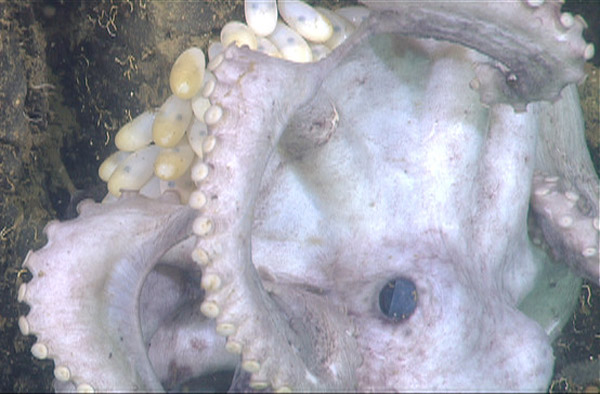 Scientists discover that Graneledone boreopacifica has the longest brooding time of any animal on the planet The ultimate goal of all species on the planet is procreation, the act of making anew. And many species go to great lengths to set their progeny off on the right path: orangutan mothers have been known to breast […]
Scientists discover that Graneledone boreopacifica has the longest brooding time of any animal on the planet The ultimate goal of all species on the planet is procreation, the act of making anew. And many species go to great lengths to set their progeny off on the right path: orangutan mothers have been known to breast […]
Wonderful Creatures: the tiny, predatory penis-worm that lies in wait in the sand
 The seabed is really where it’s at in terms of animal diversity. Of the 35 known animal lineages, representatives of all but two are found here. In contrast, the huge numbers of species that inhabit tropical rainforests represent a mere 12 lineages. One group of animals that illustrates the diversity of the seabed is the […]
The seabed is really where it’s at in terms of animal diversity. Of the 35 known animal lineages, representatives of all but two are found here. In contrast, the huge numbers of species that inhabit tropical rainforests represent a mere 12 lineages. One group of animals that illustrates the diversity of the seabed is the […]
Wonderful Creatures: the bizarre-looking marine worm with an incredibly important ecological role
 Almost everyone knows what an earthworm is, but these very familiar animals are just one variation on a very rich theme that is at its most fabulously varied in the oceans. The mind-boggling appearances and lifestyles of the marine segmented worms are perfectly exemplified by this week’s animal. Looking like an intricately folded napkin or […]
Almost everyone knows what an earthworm is, but these very familiar animals are just one variation on a very rich theme that is at its most fabulously varied in the oceans. The mind-boggling appearances and lifestyles of the marine segmented worms are perfectly exemplified by this week’s animal. Looking like an intricately folded napkin or […]
Animal Earth: exploring the hidden biodiversity of our planet
 A sea angel, Clione limacine. In this image the grasping tentacles and chitinous hooks are retracted. Photo by: Alexander Semenov. Most of the species on Earth we never see. In fact, we have no idea what they look like, much less how spectacular they are. In general, people can identify relatively few of their backyard […]
A sea angel, Clione limacine. In this image the grasping tentacles and chitinous hooks are retracted. Photo by: Alexander Semenov. Most of the species on Earth we never see. In fact, we have no idea what they look like, much less how spectacular they are. In general, people can identify relatively few of their backyard […]
California ‘sea monster’ is an oarfish
 The dead “sea monster’ spotted off the coast of Southern California on Sunday is actually an oarfish, a deepwater fish species that can reach a length of 55 feet (17 meters). The 18-foot-long carcass was sighted by Jasmine Santana, a marine science instructor at the Catalina Island Marine Institute (CIMI), while snorkeling in during a […]
The dead “sea monster’ spotted off the coast of Southern California on Sunday is actually an oarfish, a deepwater fish species that can reach a length of 55 feet (17 meters). The 18-foot-long carcass was sighted by Jasmine Santana, a marine science instructor at the Catalina Island Marine Institute (CIMI), while snorkeling in during a […]
Scientists find the ‘missing heat’ of global warming 700 meters below the sea
 Total ocean heat content shown in violet, while grey shows 0 to 300 meters and blue shows 300 to 700 meters. Vertical colored bars show volcanic eruptions that cooled the Earth for a short period and the 1997-98 El Nino event. Chart from Balmaseda et al. Critics of climate change often claim that warming has […]
Total ocean heat content shown in violet, while grey shows 0 to 300 meters and blue shows 300 to 700 meters. Vertical colored bars show volcanic eruptions that cooled the Earth for a short period and the 1997-98 El Nino event. Chart from Balmaseda et al. Critics of climate change often claim that warming has […]
Sacrificial squid has unique way of deterring predators
 Squid drops arms when tapped by a bottle brush. Photo by: Stephanie Bush, MBARI. Octopoteuthis deletron—this deep-dwelling, unassuming little squid may appear plain and boring, but when threatened, it has a peculiar way of defending itself. This foot-long invertebrate behaves a bit differently than most of its close cousins: it drops its arms. Most cephalopods, […]
Squid drops arms when tapped by a bottle brush. Photo by: Stephanie Bush, MBARI. Octopoteuthis deletron—this deep-dwelling, unassuming little squid may appear plain and boring, but when threatened, it has a peculiar way of defending itself. This foot-long invertebrate behaves a bit differently than most of its close cousins: it drops its arms. Most cephalopods, […]
‘Monster larva’ turns into a shrimp
 The larva known as Cerataspis monstrosa. Photo courtesy of Bracken-Grissom et al. With blue devil-shaped horns and red armor, the monster larva, or Cerataspis monstrosa, kept scientists guessing for nearly 200 years; infrequently found in the bellies of marine predators, researchers could not imagine what this larva became as an adult. Now they do: the […]
The larva known as Cerataspis monstrosa. Photo courtesy of Bracken-Grissom et al. With blue devil-shaped horns and red armor, the monster larva, or Cerataspis monstrosa, kept scientists guessing for nearly 200 years; infrequently found in the bellies of marine predators, researchers could not imagine what this larva became as an adult. Now they do: the […]
Controversial deep sea mining project approved in Papua New Guinea, first of its kind
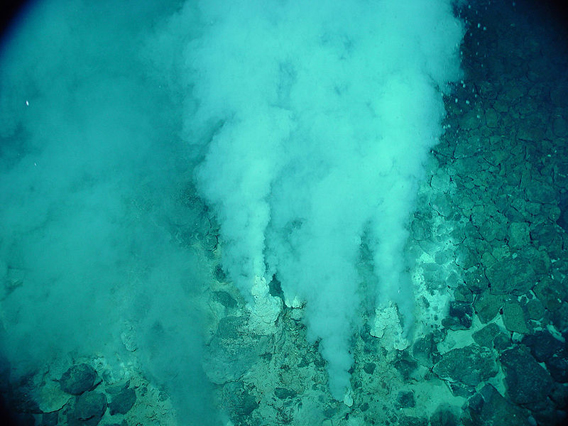 Hydrothermal vent in the Marianas Trench. Life on hydrothermal vents were not discovered until the late 1970s. Decades later, much remains unknown about these vents and many of them remain unexplored. Photo by: NOAA. The Papua New Guinea government has granted a 20-year license for copper and gold mining around a mile (1.6 kilometers) below […]
Hydrothermal vent in the Marianas Trench. Life on hydrothermal vents were not discovered until the late 1970s. Decades later, much remains unknown about these vents and many of them remain unexplored. Photo by: NOAA. The Papua New Guinea government has granted a 20-year license for copper and gold mining around a mile (1.6 kilometers) below […]
New tiny crustacean discovered in deep sea off Europe (photo)
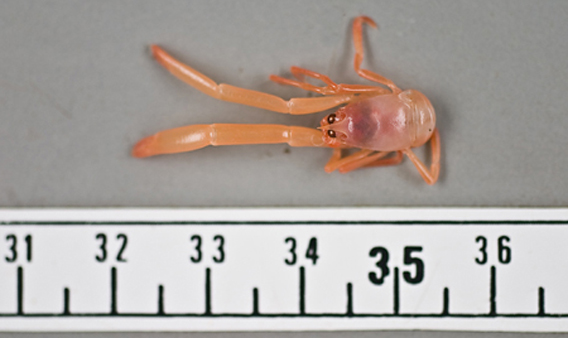 Uroptychus cartesi. Photo by: Antonio Punzon/IEO. Scientists have pulled up a tiny new species of ‘squat lobster’ from a deep sea mountain at 1,410 meters below sea level off the coast of Spain. Dubbed Uroptychus cartesi, this is only the fourth species in this genus from the eastern Atlantic Ocean, although there are over hundred […]
Uroptychus cartesi. Photo by: Antonio Punzon/IEO. Scientists have pulled up a tiny new species of ‘squat lobster’ from a deep sea mountain at 1,410 meters below sea level off the coast of Spain. Dubbed Uroptychus cartesi, this is only the fourth species in this genus from the eastern Atlantic Ocean, although there are over hundred […]
BP Deepwater Horizon deformities: eyeless shrimp, clawless crabs
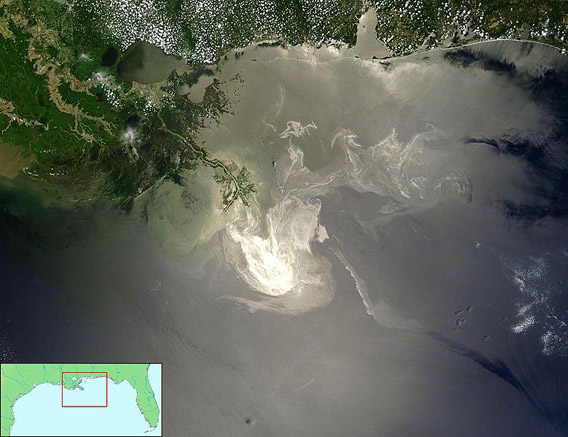 BP Deepwater Horizon oil spill as seen from space. Photo by: NASA’s Terra Satellite. Two years after the BP-leased Deepwater Horizon drilling rig exploded in the Gulf of Mexico, killing eleven and causing an oil spill that lasted three months, scientists say the impacts on the Gulf ecosystem are only beginning to come to light […]
BP Deepwater Horizon oil spill as seen from space. Photo by: NASA’s Terra Satellite. Two years after the BP-leased Deepwater Horizon drilling rig exploded in the Gulf of Mexico, killing eleven and causing an oil spill that lasted three months, scientists say the impacts on the Gulf ecosystem are only beginning to come to light […]
Photos: scientists find new species at world’s deepest undersea vent
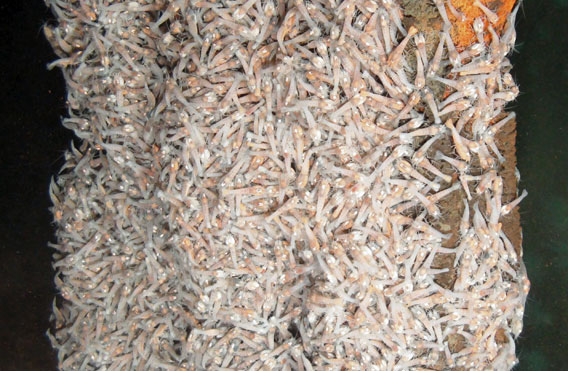 New shrimp species crowd the world’s deepest undersea vents. Photo by: University of Southampton/National Oceanography Center (NOC). It sounds like a medieval vision of hell: in pitch darkness, amid blazing heat, rise spewing volcanic vents. But there are no demons and devils down here, instead the deep sea hydrothermal vent, located in the very non-hellish […]
New shrimp species crowd the world’s deepest undersea vents. Photo by: University of Southampton/National Oceanography Center (NOC). It sounds like a medieval vision of hell: in pitch darkness, amid blazing heat, rise spewing volcanic vents. But there are no demons and devils down here, instead the deep sea hydrothermal vent, located in the very non-hellish […]
‘Lost world’ dominated by Yeti crabs discovered in the Antarctic deep
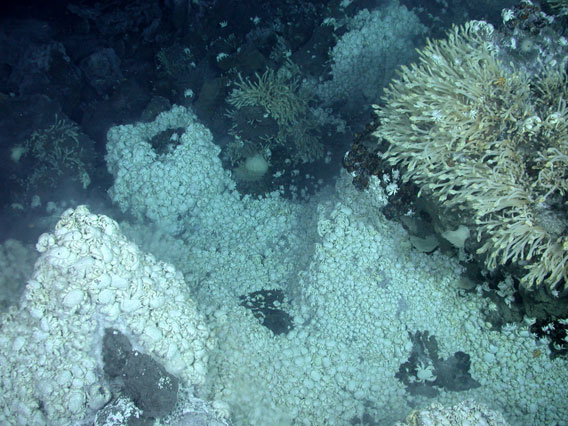 A new species of Yeti crabs cover nearly every inch of the “lost world” of deep sea Antarctic hydrothermal vents. Photo by: Oxford University. Click to enlarge. Scientists have discovered a deep sea ecosystem dominated by hairy pale crabs off of Antarctica. The new species of “Yeti crabs” survive alongside many other likely new species, […]
A new species of Yeti crabs cover nearly every inch of the “lost world” of deep sea Antarctic hydrothermal vents. Photo by: Oxford University. Click to enlarge. Scientists have discovered a deep sea ecosystem dominated by hairy pale crabs off of Antarctica. The new species of “Yeti crabs” survive alongside many other likely new species, […]
Yeti crab cultivates bacteria on its claws to feed itself
A species of deep-sea crab found in hydrothermal vents off Costa Rica cultivates “gardens” of bacteria on its claws to feed itself, reports Nature News. Kiwa puravida, which is named after the common Costa Rican saying ‘pure life’, was discovered in 2006 by Andrew Thurber, a marine biologist now at Oregon State University, during a […]
Giant one-celled organisms discovered over six miles below the ocean’s surface
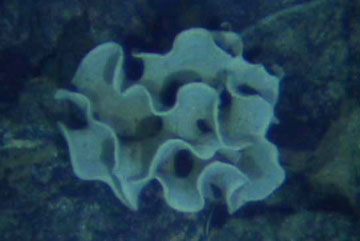 Imagine a one-celled organism the size of a mango. It’s not science fiction, but fact: scientists have cataloged dozens of giant one-celled creatures, around 4 inches (10 centimeters), in the deep abysses of the world’s oceans. But recent exploration of the Mariana Trench has uncovered the deepest record yet of the one-celled behemoths, known as […]
Imagine a one-celled organism the size of a mango. It’s not science fiction, but fact: scientists have cataloged dozens of giant one-celled creatures, around 4 inches (10 centimeters), in the deep abysses of the world’s oceans. But recent exploration of the Mariana Trench has uncovered the deepest record yet of the one-celled behemoths, known as […]
Gulf of Mexico bottom still coated in oil, recovery long way off
 Samantha Joye of the University of Georgia has seen the bottom of the Gulf of Mexico and the view wasn’t pretty. Speaking at the American Association for the Advancement of Science, Joye told the conference that she found places where oil lay on the Gulf floor nearly 4 inches (10 centimeters) thick. Joye’s findings contradict […]
Samantha Joye of the University of Georgia has seen the bottom of the Gulf of Mexico and the view wasn’t pretty. Speaking at the American Association for the Advancement of Science, Joye told the conference that she found places where oil lay on the Gulf floor nearly 4 inches (10 centimeters) thick. Joye’s findings contradict […]
Photo: expedition discovers 20% of world’s squids, including new species
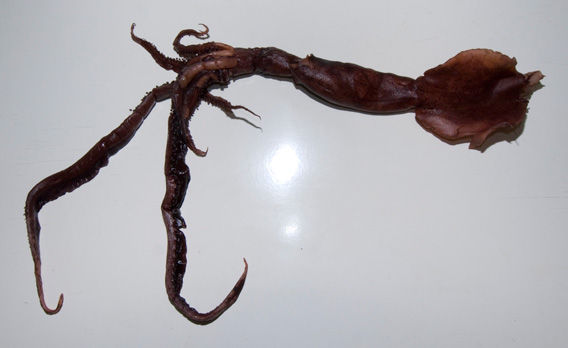 An expedition to the seamounts of the southern Indian Ocean has proven that the region is a biodiverse hotspot for squids. To date, the expedition has identified 70 species of squid comprising 20% of the world’s known squid species. But that’s not all: they have also uncovered new species. At just over 2 feet long […]
An expedition to the seamounts of the southern Indian Ocean has proven that the region is a biodiverse hotspot for squids. To date, the expedition has identified 70 species of squid comprising 20% of the world’s known squid species. But that’s not all: they have also uncovered new species. At just over 2 feet long […]
Photos: weird new species discovered in deep sea trench
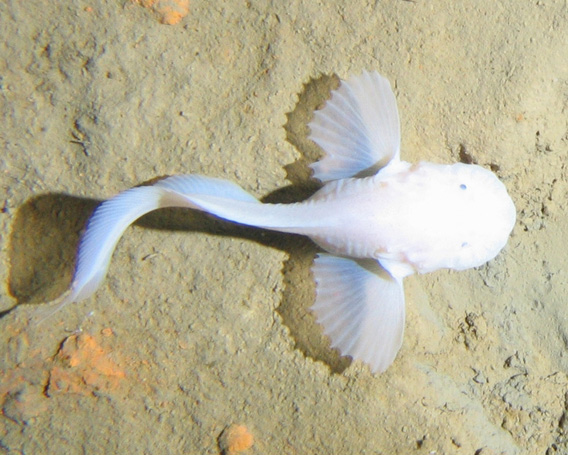 Fish were not expected to be able to survive so deep, but scientists have captured footage of a new species of a scavenger-hunting snailfish swimming at an astounding 7,000 meters below the surface. The video, taken from an 8,000 meter-deep sea trench in the Southeast Pacific Ocean, showed a level of biodiversity that surprised seasoned […]
Fish were not expected to be able to survive so deep, but scientists have captured footage of a new species of a scavenger-hunting snailfish swimming at an astounding 7,000 meters below the surface. The video, taken from an 8,000 meter-deep sea trench in the Southeast Pacific Ocean, showed a level of biodiversity that surprised seasoned […]
The biology and conservation of declining coral reefs, an interview with Kristian Teleki
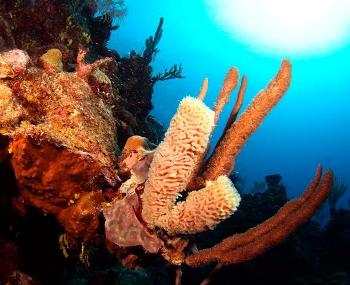 Kristian Teleki, Vice President for Science Initiatives for SeaWeb and former Director of the International Coral Reef Action Network (ICRAN), spoke with Laurel Neme on her “The WildLife” radio show and podcast about the biology of corals, threats to coral reefs, and what can be done to halt their decline. This interview originally aired May […]
Kristian Teleki, Vice President for Science Initiatives for SeaWeb and former Director of the International Coral Reef Action Network (ICRAN), spoke with Laurel Neme on her “The WildLife” radio show and podcast about the biology of corals, threats to coral reefs, and what can be done to halt their decline. This interview originally aired May […]
What is the most unexplored ecosystem on Earth?
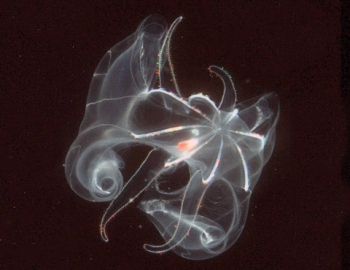 One should be forgiven for thinking that the most under-explored ecosystem in the world is tropical rainforests or cave systems since new species are frequently uncovered in such places. But new research in the open-access journal PLoS ONE finds that the least explored part of the world is the deep sea, especially what lies beneath […]
One should be forgiven for thinking that the most under-explored ecosystem in the world is tropical rainforests or cave systems since new species are frequently uncovered in such places. But new research in the open-access journal PLoS ONE finds that the least explored part of the world is the deep sea, especially what lies beneath […]
Visiting the Gulf: how wildlife and people are faring in America’s worst environmental disaster, an interview with Jennifer Jacquet
 “President Obama called it ‘the worst environmental disaster America has ever faced.’ So I thought I should face it and head to the Gulf”—these are the opening words on the popular blog Guilty Planet as the author, marine biologist Jennifer Jacquet, embarked on a ten day trip to Louisiana. As a scientist, Jacquet was, of […]
“President Obama called it ‘the worst environmental disaster America has ever faced.’ So I thought I should face it and head to the Gulf”—these are the opening words on the popular blog Guilty Planet as the author, marine biologist Jennifer Jacquet, embarked on a ten day trip to Louisiana. As a scientist, Jacquet was, of […]
Oil disaster threatens Gulf of Mexico’s deep water titans
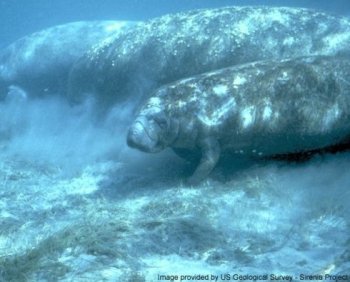 As I discovered in the course of researching my book, No Rain in the Amazon: How South America’s Climate Change Affects the Entire Planet (Palgrave, 2010), the oil industry has had a poor record when it comes to protecting aquatic sea life. Take for example the manatee, which has been put at risk from the […]
As I discovered in the course of researching my book, No Rain in the Amazon: How South America’s Climate Change Affects the Entire Planet (Palgrave, 2010), the oil industry has had a poor record when it comes to protecting aquatic sea life. Take for example the manatee, which has been put at risk from the […]
Ukuran panjang pertama yang didapatkan dari ular laut raksasa dari kedalaman: oarfish
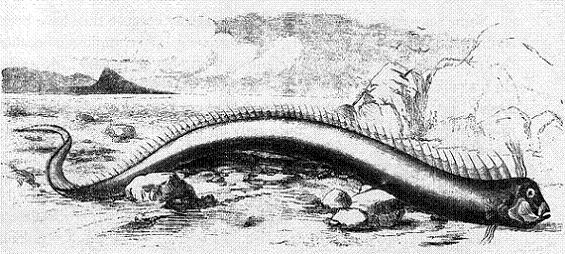 Para peneliti telah mendapatkan apa yang mereka percaya sebagai ukuran panjang pertama dari oarfish, spesies yang kemungkinan melatarbelakangi kisah-kisah legenda mengenai ular raksasa. Jauh di dalam teluk Meksiko, peneliti memotret oarfish yang sedang berenang (Regalecus glesne) untuk beberapa menit. Mereka menangkap ukuran panjang ini menggunakan kendaraan yang dioperasikan dengan remote (ROV) yang disediakan oleh perusahaan […]
Para peneliti telah mendapatkan apa yang mereka percaya sebagai ukuran panjang pertama dari oarfish, spesies yang kemungkinan melatarbelakangi kisah-kisah legenda mengenai ular raksasa. Jauh di dalam teluk Meksiko, peneliti memotret oarfish yang sedang berenang (Regalecus glesne) untuk beberapa menit. Mereka menangkap ukuran panjang ini menggunakan kendaraan yang dioperasikan dengan remote (ROV) yang disediakan oleh perusahaan […]
Foto: Blobfish Agar-Agar dalam bahaya
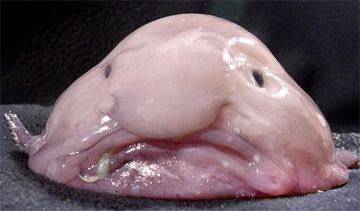 Spesies yang dijuluki “ikan paling menderita di dunia” beresiko terancam punah akibat praktek penangkapan ikan yang buruk, menurut laporan The Daily Telegraph. Blobfish (Psychrolutes marcidus), ikan mirip agar-agar yang hidup di kedalaman hingga 800 meter, di mana dia memakan zat-zat organik yang melayang, tanpa sengaja tertangkap oleh kapal pemukat yang mencari kepiting dan lobster di […]
Spesies yang dijuluki “ikan paling menderita di dunia” beresiko terancam punah akibat praktek penangkapan ikan yang buruk, menurut laporan The Daily Telegraph. Blobfish (Psychrolutes marcidus), ikan mirip agar-agar yang hidup di kedalaman hingga 800 meter, di mana dia memakan zat-zat organik yang melayang, tanpa sengaja tertangkap oleh kapal pemukat yang mencari kepiting dan lobster di […]
Photos: the penis-like mushroom and other top 10 new species of 2009
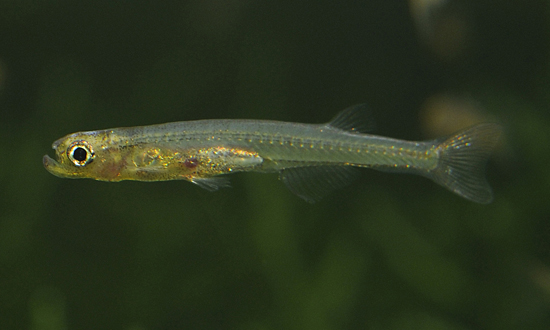 The International Institute for Species Exploration at Arizona State University has released its annual top 10 list of new species discovered last year. This time the list includes a two inch penis-like mushroom, a minnow named after Bram Stoker’s world-famous horror-character, a bomb-throwing deep sea worm, a giant carnivorous plant named after TV personality and […]
The International Institute for Species Exploration at Arizona State University has released its annual top 10 list of new species discovered last year. This time the list includes a two inch penis-like mushroom, a minnow named after Bram Stoker’s world-famous horror-character, a bomb-throwing deep sea worm, a giant carnivorous plant named after TV personality and […]
Who’s to blame for the oil spill?
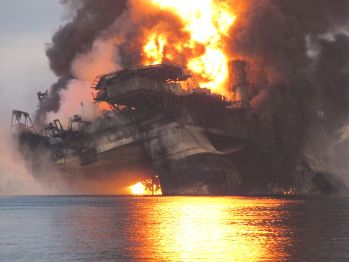 Why we get the oil spill we deserve. America, we deserve the oil spill now threatening the beautiful coast of Louisiana. This disaster is not natural, like the earthquake that devastated Haiti or tsunami that swept Southeast Asia in 2006; this disaster is man-made, American-made in fact, pure and simple. So, while in the upcoming […]
Why we get the oil spill we deserve. America, we deserve the oil spill now threatening the beautiful coast of Louisiana. This disaster is not natural, like the earthquake that devastated Haiti or tsunami that swept Southeast Asia in 2006; this disaster is man-made, American-made in fact, pure and simple. So, while in the upcoming […]
Close to a billion species: ocean exploration reveals shocking diversity of tiny marine life
 Biologists worldwide may have to start re-evaluating their estimates of the number of species on Earth, since expeditions documenting the oceans’ tiniest species have revealed shocking diversity: in the tens of millions of species, at least, and according to one researcher “closer to a billion”. Fourteen field projects sent out by the Census of Marine […]
Biologists worldwide may have to start re-evaluating their estimates of the number of species on Earth, since expeditions documenting the oceans’ tiniest species have revealed shocking diversity: in the tens of millions of species, at least, and according to one researcher “closer to a billion”. Fourteen field projects sent out by the Census of Marine […]
First footage captured of giant sea serpent of the deep: the oarfish
 Scientists have captured what they believe to be the first footage ever of the oarfish, the species likely responsible for legends told of sea serpents. Deep in the gulf of Mexico, researchers photographed a swimming oarfish (Regalecus glesne) for several minutes. They captured the footage using a remotely operated vehicle (ROV) provided by oil companies, […]
Scientists have captured what they believe to be the first footage ever of the oarfish, the species likely responsible for legends told of sea serpents. Deep in the gulf of Mexico, researchers photographed a swimming oarfish (Regalecus glesne) for several minutes. They captured the footage using a remotely operated vehicle (ROV) provided by oil companies, […]
Photos: Gelatinous Blobfish in danger
 A species dubbed “the world’s most miserable-looking fish” is at risk of extinction due to poor fishing practices, reports The Daily Telegraph. The Blobfish (Psychrolutes marcidus), a gelatinous fish that lives at depths up to 800 meters, where it feeds on drifting organic matter, is being accidently captured by deep-sea trawlers seeking crabs and lobsters […]
A species dubbed “the world’s most miserable-looking fish” is at risk of extinction due to poor fishing practices, reports The Daily Telegraph. The Blobfish (Psychrolutes marcidus), a gelatinous fish that lives at depths up to 800 meters, where it feeds on drifting organic matter, is being accidently captured by deep-sea trawlers seeking crabs and lobsters […]
Bottom-dwelling sea animals play surprising role in carbon sequestration
 Researchers have long known that some marine animals, such as plankton, play big roles in the carbon cycle, but a new study shows that a long-ignored family of marine animals, the bottom-dwelling echinoderms, also do their part in the carbon cycle. Members of the echinoderms—sea stars, sea urchins, brittle starts, sea cucumbers, and sea lilies—capture […]
Researchers have long known that some marine animals, such as plankton, play big roles in the carbon cycle, but a new study shows that a long-ignored family of marine animals, the bottom-dwelling echinoderms, also do their part in the carbon cycle. Members of the echinoderms—sea stars, sea urchins, brittle starts, sea cucumbers, and sea lilies—capture […]
Photos: ten beloved species threatened by global warming
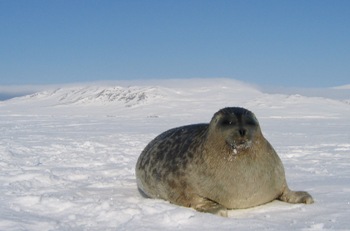 The International Union for the Conservation of Nature (IUCN) has released a list of ten species that are likely to be among the hardest hit by climate change, including beloved species such as the leatherback sea turtle, the koala, the emperor penguin, the clownfish, and the beluga whale. The timing of the list coincides with […]
The International Union for the Conservation of Nature (IUCN) has released a list of ten species that are likely to be among the hardest hit by climate change, including beloved species such as the leatherback sea turtle, the koala, the emperor penguin, the clownfish, and the beluga whale. The timing of the list coincides with […]
Videos and Photos: over 17,000 species discovered in waters beyond the sun’s reach
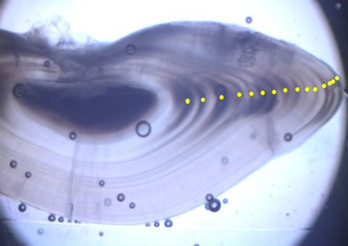 Researchers find startling array of life in the ocean’s abyss. Deep, deep below the ocean’s surface, in a world of ever-present darkness, one would expect few, if any, species would thrive. However, recent expeditions by the Census of Marine Life (CoML) have found an incredible array of strange, diverse, and amazing creatures (video and photos […]
Researchers find startling array of life in the ocean’s abyss. Deep, deep below the ocean’s surface, in a world of ever-present darkness, one would expect few, if any, species would thrive. However, recent expeditions by the Census of Marine Life (CoML) have found an incredible array of strange, diverse, and amazing creatures (video and photos […]
New species of ghostshark discovered off California’s coast
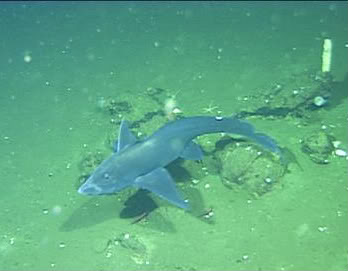 The discovery of Eastern Pacific black ghostshark Hydrolagus melanophasma is notable for a number of reasons. It is the first new species of cartilaginous fish—i.e fish whose skeletons are made entirely of cartilage, such as sharks, rays, and skate—to be described in California water since 1947. It is also a representative of an ancient and […]
The discovery of Eastern Pacific black ghostshark Hydrolagus melanophasma is notable for a number of reasons. It is the first new species of cartilaginous fish—i.e fish whose skeletons are made entirely of cartilage, such as sharks, rays, and skate—to be described in California water since 1947. It is also a representative of an ancient and […]
Whale skeleton reveals species unknown to science
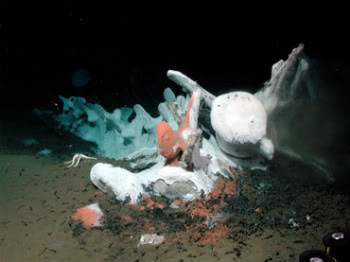 The importance of a whale to the oceanic ecosystem does not end with its life. After dying, a whale’s body sinks to the bottom of the ocean and becomes food for many species, some of whom specialize on feeding on these corpses. Using underwater cameras, researchers with the University of Gothenburg, Sweden have discovered nine […]
The importance of a whale to the oceanic ecosystem does not end with its life. After dying, a whale’s body sinks to the bottom of the ocean and becomes food for many species, some of whom specialize on feeding on these corpses. Using underwater cameras, researchers with the University of Gothenburg, Sweden have discovered nine […]
Photos: new deep sea species discovered off the Canary Islands
 Owned by Spain, but located just off the northwest coast of Africa, the Canary Islands sport a wide variety of marine life, including five species of marine turtles, ten species of sharks and rays, and innumerable fish and invertebrates. However, a new expedition has gone beyond the known, sending a robot to depths of 500 […]
Owned by Spain, but located just off the northwest coast of Africa, the Canary Islands sport a wide variety of marine life, including five species of marine turtles, ten species of sharks and rays, and innumerable fish and invertebrates. However, a new expedition has gone beyond the known, sending a robot to depths of 500 […]
Newly discovered deep sea worms throw bioluminescent ‘bombs’
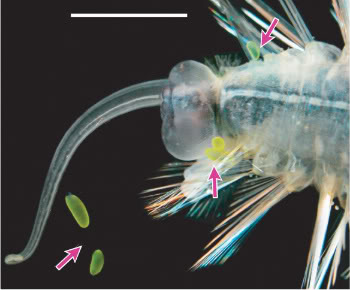
Greenpeace drops boulders in Swedish waters to protect marine life from bottom trawling
Activists with Greenpeace have begun placing massive granite rocks in Swedish waters to prevent fishing boats from bottom trawling in sensitive areas. The organization accuses the Swedish government of failing to protecting the areas of Fladen, Lilla Middlegrund, and Kattegat from bottom trawling, an invasive technique that drags nets along the sea bottom disrupting seabed […]
Shells thinning due to ocean acidification
Seven new species of deep sea coral discovered
Climate change, ocean acidification may doom jumbo squid
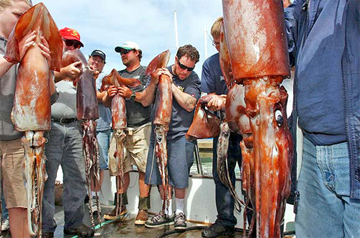 Climate change, ocean acidification may doom jumbo squid Climate change may stop jumbo squid invasion mongabay.com December 15, 2008
Climate change, ocean acidification may doom jumbo squid Climate change may stop jumbo squid invasion mongabay.com December 15, 2008
Hundreds of rare and bizarre marine species discovered
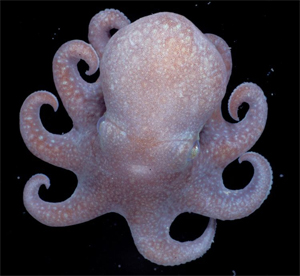 Photos: Hundreds of strange and unknown marine species discovered Hundreds of rare and bizarre marine species discovered Jeremy Hance, mongabay.com November 9, 2008 More discoveries from the Census of Marine Life
Photos: Hundreds of strange and unknown marine species discovered Hundreds of rare and bizarre marine species discovered Jeremy Hance, mongabay.com November 9, 2008 More discoveries from the Census of Marine Life
Giant sea creatures discovered in Antarctica
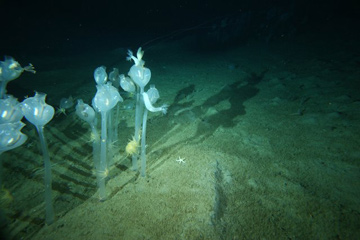 Photos: Giant sea creatures discovered in Antarctica An eight week long survey of New Zealand’s Antarctic waters has turned up giant creatures including jellyfish with 12-foot tentacles and 2-foot-wide starfish, as well as up to eight previously undiscovered species of mollusc, reports the Associated Press (A.P.). “Gigantism is very common in Antarctic waters — we […]
Photos: Giant sea creatures discovered in Antarctica An eight week long survey of New Zealand’s Antarctic waters has turned up giant creatures including jellyfish with 12-foot tentacles and 2-foot-wide starfish, as well as up to eight previously undiscovered species of mollusc, reports the Associated Press (A.P.). “Gigantism is very common in Antarctic waters — we […]
Photos of bizarre creatures discovered in Antarctica
 Photos of bizarre species discovered in Antarctica Photos of bizarre creatures discovered in Antarctica mongabay.com February 19, 2008 The stalked structures looking like glass tulips are actually animals known as tunicates. They are early colonizers of areas recently disturbed by ice-berg scouring. They filter food particles from the water by pumping it through an internal […]
Photos of bizarre species discovered in Antarctica Photos of bizarre creatures discovered in Antarctica mongabay.com February 19, 2008 The stalked structures looking like glass tulips are actually animals known as tunicates. They are early colonizers of areas recently disturbed by ice-berg scouring. They filter food particles from the water by pumping it through an internal […]
Demise of deep-sea species could lead to collapse of ocean ecosystems
Demise of deep-sea species could lead to collapse of ocean ecosystems Demise of deep-sea species could lead to collapse of ocean ecosystems mongabay.com December 27, 2007 Declining populations of deep-sea species pose a significant threat to the health of world oceans, warns a study published in the January 8th issue of Current Biology. Analyzing the […]
Black jellyfish, strange marine species discovered in deep ocean
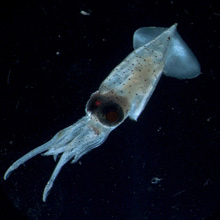 Black jellyfish, strange marine species discovered in deep ocean Black jellyfish, strange marine species discovered in deep ocean mongabay.com October 17, 2007 A 1-cm long larval squid, photographed through Russ Hopcroft’s microscope. This lovely red medusa, Atolla gigantea, about 15 cm in diameter, was collected in midwater by the ROV and photographed in the bigger […]
Black jellyfish, strange marine species discovered in deep ocean Black jellyfish, strange marine species discovered in deep ocean mongabay.com October 17, 2007 A 1-cm long larval squid, photographed through Russ Hopcroft’s microscope. This lovely red medusa, Atolla gigantea, about 15 cm in diameter, was collected in midwater by the ROV and photographed in the bigger […]
‘New continent’ and species discovered in Atlantic study
 ‘New continent’ and species discovered in Atlantic study ‘New continent’ and species discovered in Atlantic study Census of Marine Life August 18, 2007 The Census of Marine Life reports the discovery of previously unknown marine species during a five-week scientific expedition in the North Atlantic. A scientist from the University of Aberdeen is leading a […]
‘New continent’ and species discovered in Atlantic study ‘New continent’ and species discovered in Atlantic study Census of Marine Life August 18, 2007 The Census of Marine Life reports the discovery of previously unknown marine species during a five-week scientific expedition in the North Atlantic. A scientist from the University of Aberdeen is leading a […]
How to save the world’s oceans from overfishing
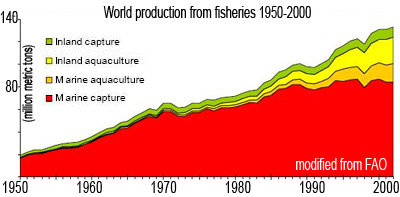 How to save the world’s oceans from overfishing How to save the world’s oceans from overfishing An interview with the Monterey Bay Aquarium’s Mike Sutton Rhett A. Butler, mongabay.com July 9, 2007 Global fishing stocks are in trouble. After expanding from 18 millions tons in 1950 to around 94 million tons in 2000, annual world […]
How to save the world’s oceans from overfishing How to save the world’s oceans from overfishing An interview with the Monterey Bay Aquarium’s Mike Sutton Rhett A. Butler, mongabay.com July 9, 2007 Global fishing stocks are in trouble. After expanding from 18 millions tons in 1950 to around 94 million tons in 2000, annual world […]
Photo of rare Indonesian coelacanth
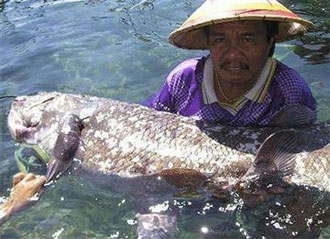 Photo of rare Indonesian coelacanth Photo of rare Indonesian coelacanth mongabay.com May 22, 2007 Reuters has published photos taken of the rare coelacanth captured off the northern coast of the Indonesian island of Sulawesi on May 19, 2007. The coelacanth is fish species that dates back more than 400 million years in the fossil record. […]
Photo of rare Indonesian coelacanth Photo of rare Indonesian coelacanth mongabay.com May 22, 2007 Reuters has published photos taken of the rare coelacanth captured off the northern coast of the Indonesian island of Sulawesi on May 19, 2007. The coelacanth is fish species that dates back more than 400 million years in the fossil record. […]
Rare coelacanth captured in Indonesia
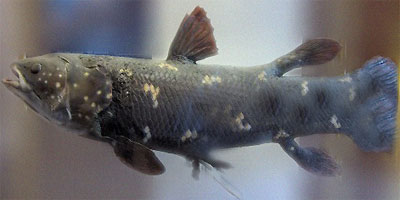 Rare coelacanth captured in Indonesia Rare coelacanth captured in Indonesia May 20, 2007 An Indonesian fisherman caught a coelacanth, a species so ancient it is called a “living fossil”, off the coast of Sulawesi, Indonesia, according to the Associated Press. The fisherman managed to keep the specimen alive for 17 hours in a pool before […]
Rare coelacanth captured in Indonesia Rare coelacanth captured in Indonesia May 20, 2007 An Indonesian fisherman caught a coelacanth, a species so ancient it is called a “living fossil”, off the coast of Sulawesi, Indonesia, according to the Associated Press. The fisherman managed to keep the specimen alive for 17 hours in a pool before […]
Deep-sea mining threatens fragile marine ecosystems
Deep-sea mining threatens fragile marine ecosystems Deep-sea mining threatens fragile marine ecosystems University of Toronto May 17, 2007 Undersea habitats supporting rare and potentially valuable organisms are at risk from seafloor mining scheduled to begin within this decade, says a new study led by a University of Toronto Mississauga geologist. Mining of massive sulphide deposits […]
Deep-sea creatures discovered near the Antarctic
Deep-sea creatures discovered near the Antarctic Deep-sea creatures discovered near the Antarctic mongabay.com May 16, 2007 Scientists have found hundreds of new marine creatures in the depths of the Weddell Sea near Antarctica, including Carnivorous sponges, free-swimming worms, crustaceans, and mollusks, reports research published in the current issue of the journal Nature. The researchers say […]
Deal to end destructive bottom trawling reached
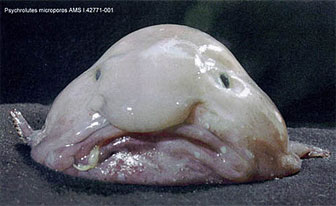 Deal to end destructive bottom trawling reached Deal to end destructive bottom trawling reached mongabay.com May 7, 2007 Governments have reached a landmark agreement to end high seas bottom trawling in nearly a quarter of the world’s oceans. Environmentalists say bottom trawling, which destroys reefs and depletes slow-growing fish species, is one of the world’s […]
Deal to end destructive bottom trawling reached Deal to end destructive bottom trawling reached mongabay.com May 7, 2007 Governments have reached a landmark agreement to end high seas bottom trawling in nearly a quarter of the world’s oceans. Environmentalists say bottom trawling, which destroys reefs and depletes slow-growing fish species, is one of the world’s […]
Deep sea fish growing slower due to global warming
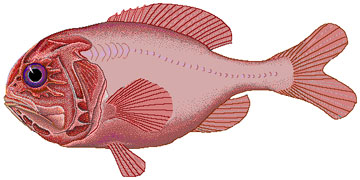 Deep sea fish growing slower due to global warming Deep sea fish growing slower due to global warming Rhett A. Butler, mongabay.com April 23, 2007 Changes in ocean temperature have altered the growth rates of commercially harvested fish over the past century, according to a new study published in this week’s early online edition of […]
Deep sea fish growing slower due to global warming Deep sea fish growing slower due to global warming Rhett A. Butler, mongabay.com April 23, 2007 Changes in ocean temperature have altered the growth rates of commercially harvested fish over the past century, according to a new study published in this week’s early online edition of […]
Jumbo squid and sperm whales tagged
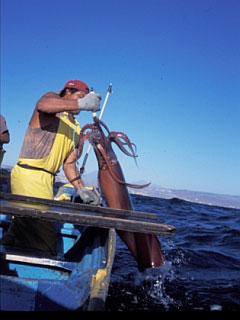 Jumbo squid and sperm whales tagged Jumbo squid and sperm whales tagged mongabay.com March 8, 2007 Scientists have simulatenously tagged sperm whales and jumbo squid off Mexico’s Pacific coast, allowing them to be tracked by satellite even as they dive to depths exceeding 3000 feet. Details of the effort are published in in the March […]
Jumbo squid and sperm whales tagged Jumbo squid and sperm whales tagged mongabay.com March 8, 2007 Scientists have simulatenously tagged sperm whales and jumbo squid off Mexico’s Pacific coast, allowing them to be tracked by satellite even as they dive to depths exceeding 3000 feet. Details of the effort are published in in the March […]
Melting ice reveals unknown species in Antarctica
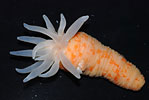 Melting ice reveals unknown species in Antarctica Melting ice reveals unknown species in Antarctica Global warming a bonanza for marine research mongabay.com February 26, 2007 An expedition to an area of seabed recently exposed by melting ice in Antarctica has discovered several previously unknown species of marine life, including deep sea lilies, gelatinous sea squirts, […]
Melting ice reveals unknown species in Antarctica Melting ice reveals unknown species in Antarctica Global warming a bonanza for marine research mongabay.com February 26, 2007 An expedition to an area of seabed recently exposed by melting ice in Antarctica has discovered several previously unknown species of marine life, including deep sea lilies, gelatinous sea squirts, […]
Giant squid use bioluminescence to hunt prey, communicate
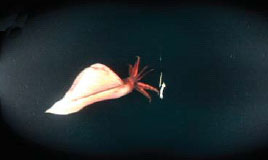 Giant squid use bioluminescence to hunt prey, communicate Giant squid use bioluminescence to hunt prey, communicate mongabay.com February 23, 2007 The giant squid uses bioluminescence to hunt its prey, according to new deap-sea observations using a high definition underwater video camera system. The findings are published in the online edition of the Proceedings of the […]
Giant squid use bioluminescence to hunt prey, communicate Giant squid use bioluminescence to hunt prey, communicate mongabay.com February 23, 2007 The giant squid uses bioluminescence to hunt its prey, according to new deap-sea observations using a high definition underwater video camera system. The findings are published in the online edition of the Proceedings of the […]
Photos of world’s largest squid
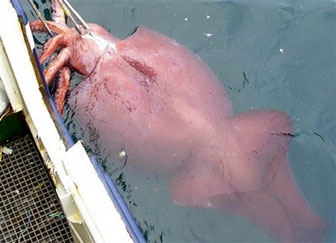 Photos of world’s largest squid Photos of world’s largest squid mongabay.com February 22, 2007 [UPDATE] Fishermen in New Zealand may have captured the largest Colossal squid ever recorded. It may be the first time a Colossal squid has been seen alive. The beast, weighing 450 kilograms (990 pounds), was eating a Patagonian toothfish (Chilean sea […]
Photos of world’s largest squid Photos of world’s largest squid mongabay.com February 22, 2007 [UPDATE] Fishermen in New Zealand may have captured the largest Colossal squid ever recorded. It may be the first time a Colossal squid has been seen alive. The beast, weighing 450 kilograms (990 pounds), was eating a Patagonian toothfish (Chilean sea […]
Government subsidies drive deep-sea fish depletion
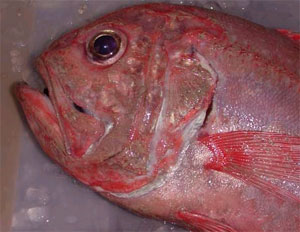 Government subsidies drive deep-sea fish depletion Government subsidies drive deep-sea fish depletion mongabay.com February 18, 2007 Saturday an international team of economists and scientists called for a ban on government subsidies that drive deep-sea trawling. Biologists say the practice is destroying the world’s fisheries. “Industrial fisheries are now going thousands of miles, thousands of feet […]
Government subsidies drive deep-sea fish depletion Government subsidies drive deep-sea fish depletion mongabay.com February 18, 2007 Saturday an international team of economists and scientists called for a ban on government subsidies that drive deep-sea trawling. Biologists say the practice is destroying the world’s fisheries. “Industrial fisheries are now going thousands of miles, thousands of feet […]
Giant squid captured!
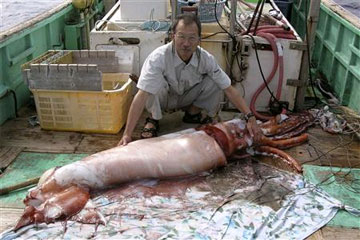 Giant squid captured! Giant squid captured! mongabay.com December 22, 2006 Japanese researchers captured a small female giant squid near the Ogasawara islands, 1,000 km (620 miles) south of Tokyo. The squid, which measured 3.5 meters (11 ft 6 in) long and weighed 50 kg (110 lb), was hooked at a depth of 650 meters (2,150 […]
Giant squid captured! Giant squid captured! mongabay.com December 22, 2006 Japanese researchers captured a small female giant squid near the Ogasawara islands, 1,000 km (620 miles) south of Tokyo. The squid, which measured 3.5 meters (11 ft 6 in) long and weighed 50 kg (110 lb), was hooked at a depth of 650 meters (2,150 […]
500 species found in census of marine life
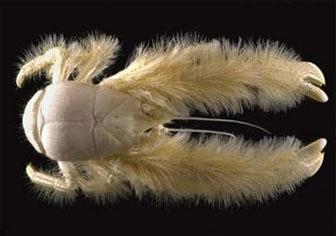 500 species found in census of marine life 500 species found in census of marine life Photos of newly discovered marine species Rhett Butler, mongabay.com December 10, 2006 Some 500 previously unknown species of marine life were discovered during the latest Census of Marine Life (CoML), a research effort involving some 2000 researchers from 80 […]
500 species found in census of marine life 500 species found in census of marine life Photos of newly discovered marine species Rhett Butler, mongabay.com December 10, 2006 Some 500 previously unknown species of marine life were discovered during the latest Census of Marine Life (CoML), a research effort involving some 2000 researchers from 80 […]
Bottom trawling is ecologically destructive and should be banned says coalition
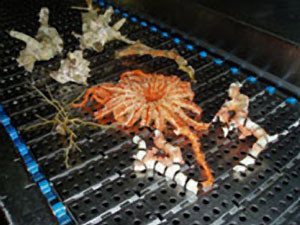 Bottom trawling is ecologically destructive and should be banned says coalition Bottom trawling is ecologically destructive and should be banned says coalition mongabay.com November 14, 2006 Deep sea bottom trawling is threatening marine ecosystems and biodiversity and should be banned said the Deep Sea Conservation Coalition, an advocacy group representing more than 60 conservation organizations […]
Bottom trawling is ecologically destructive and should be banned says coalition Bottom trawling is ecologically destructive and should be banned says coalition mongabay.com November 14, 2006 Deep sea bottom trawling is threatening marine ecosystems and biodiversity and should be banned said the Deep Sea Conservation Coalition, an advocacy group representing more than 60 conservation organizations […]
$230B for moon return but only $30M for deep ocean research?
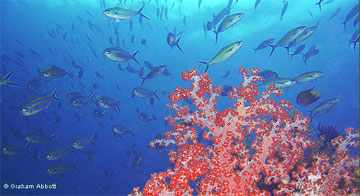 $230B for space mission but only $30M for deep ocean research? $230B for space mission but only $30M for deep ocean research? Russell A. Mittermeier Conservation International September 19, 2006 Unless you’re a space buff, you probably missed the latest news from Mars. The Rover mission has now determined that a promontory scientists call “McCool […]
$230B for space mission but only $30M for deep ocean research? $230B for space mission but only $30M for deep ocean research? Russell A. Mittermeier Conservation International September 19, 2006 Unless you’re a space buff, you probably missed the latest news from Mars. The Rover mission has now determined that a promontory scientists call “McCool […]
Deep-Sea Fish Populations Boom Over the Last 15 Years, New Scripps Study Shows
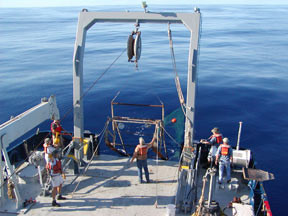 Deep-Sea Fish Populations Boom Over the Last 15 Years, New Scripps Study Shows Deep-Sea Fish Populations Boom Over the Last 15 Years, New Scripps Study Shows Scripps Institution of Oceanography April 3, 2006 Scientists make progress toward understanding mysteries surrounding animals that live in the dark recesses of the oceans The largest habitats on Earth […]
Deep-Sea Fish Populations Boom Over the Last 15 Years, New Scripps Study Shows Deep-Sea Fish Populations Boom Over the Last 15 Years, New Scripps Study Shows Scripps Institution of Oceanography April 3, 2006 Scientists make progress toward understanding mysteries surrounding animals that live in the dark recesses of the oceans The largest habitats on Earth […]
Oil companies help marine biologists to explore new frontiers in deep-sea oceanography
Oil companies help marine biologists to explore new frontiers in deep-sea oceanography Oil companies help marine biologists to explore new frontiers in deep-sea oceanography National Oceanography Centre, University of Southampton news release October 4, 2005 An idea from a young marine biologist at the National Oceanography Centre, Southampton is revolutionising oceanography in the deep oceans. […]
First picture of live giant squid
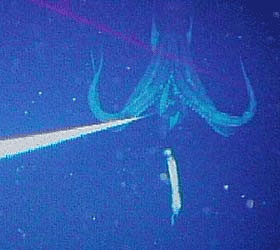 First picture of live giant squid First picture of live giant squid mongabay.com September 28, 2005 Published photo of adult Architeuthis dux in the wild, from Dr Tsunemi Kubodera, of the National Science Museum in Tokyo, and Kyoichi Mori, of the Ogaswara Whale Watching Association. The eight-meter-long Architeuthis is attacking prey hung by a white […]
First picture of live giant squid First picture of live giant squid mongabay.com September 28, 2005 Published photo of adult Architeuthis dux in the wild, from Dr Tsunemi Kubodera, of the National Science Museum in Tokyo, and Kyoichi Mori, of the Ogaswara Whale Watching Association. The eight-meter-long Architeuthis is attacking prey hung by a white […]
Feeds: news | india | latam | brasil | indonesia
 Scientists discover that Graneledone boreopacifica has the longest brooding time of any animal on the planet The ultimate goal of all species on the planet is procreation, the act of making anew. And many species go to great lengths to set their progeny off on the right path: orangutan mothers have been known to breast […]
Scientists discover that Graneledone boreopacifica has the longest brooding time of any animal on the planet The ultimate goal of all species on the planet is procreation, the act of making anew. And many species go to great lengths to set their progeny off on the right path: orangutan mothers have been known to breast […] The seabed is really where it’s at in terms of animal diversity. Of the 35 known animal lineages, representatives of all but two are found here. In contrast, the huge numbers of species that inhabit tropical rainforests represent a mere 12 lineages. One group of animals that illustrates the diversity of the seabed is the […]
The seabed is really where it’s at in terms of animal diversity. Of the 35 known animal lineages, representatives of all but two are found here. In contrast, the huge numbers of species that inhabit tropical rainforests represent a mere 12 lineages. One group of animals that illustrates the diversity of the seabed is the […] Almost everyone knows what an earthworm is, but these very familiar animals are just one variation on a very rich theme that is at its most fabulously varied in the oceans. The mind-boggling appearances and lifestyles of the marine segmented worms are perfectly exemplified by this week’s animal. Looking like an intricately folded napkin or […]
Almost everyone knows what an earthworm is, but these very familiar animals are just one variation on a very rich theme that is at its most fabulously varied in the oceans. The mind-boggling appearances and lifestyles of the marine segmented worms are perfectly exemplified by this week’s animal. Looking like an intricately folded napkin or […] A sea angel, Clione limacine. In this image the grasping tentacles and chitinous hooks are retracted. Photo by: Alexander Semenov. Most of the species on Earth we never see. In fact, we have no idea what they look like, much less how spectacular they are. In general, people can identify relatively few of their backyard […]
A sea angel, Clione limacine. In this image the grasping tentacles and chitinous hooks are retracted. Photo by: Alexander Semenov. Most of the species on Earth we never see. In fact, we have no idea what they look like, much less how spectacular they are. In general, people can identify relatively few of their backyard […] The dead “sea monster’ spotted off the coast of Southern California on Sunday is actually an oarfish, a deepwater fish species that can reach a length of 55 feet (17 meters). The 18-foot-long carcass was sighted by Jasmine Santana, a marine science instructor at the Catalina Island Marine Institute (CIMI), while snorkeling in during a […]
The dead “sea monster’ spotted off the coast of Southern California on Sunday is actually an oarfish, a deepwater fish species that can reach a length of 55 feet (17 meters). The 18-foot-long carcass was sighted by Jasmine Santana, a marine science instructor at the Catalina Island Marine Institute (CIMI), while snorkeling in during a […] Total ocean heat content shown in violet, while grey shows 0 to 300 meters and blue shows 300 to 700 meters. Vertical colored bars show volcanic eruptions that cooled the Earth for a short period and the 1997-98 El Nino event. Chart from Balmaseda et al. Critics of climate change often claim that warming has […]
Total ocean heat content shown in violet, while grey shows 0 to 300 meters and blue shows 300 to 700 meters. Vertical colored bars show volcanic eruptions that cooled the Earth for a short period and the 1997-98 El Nino event. Chart from Balmaseda et al. Critics of climate change often claim that warming has […] Squid drops arms when tapped by a bottle brush. Photo by: Stephanie Bush, MBARI. Octopoteuthis deletron—this deep-dwelling, unassuming little squid may appear plain and boring, but when threatened, it has a peculiar way of defending itself. This foot-long invertebrate behaves a bit differently than most of its close cousins: it drops its arms. Most cephalopods, […]
Squid drops arms when tapped by a bottle brush. Photo by: Stephanie Bush, MBARI. Octopoteuthis deletron—this deep-dwelling, unassuming little squid may appear plain and boring, but when threatened, it has a peculiar way of defending itself. This foot-long invertebrate behaves a bit differently than most of its close cousins: it drops its arms. Most cephalopods, […] The larva known as Cerataspis monstrosa. Photo courtesy of Bracken-Grissom et al. With blue devil-shaped horns and red armor, the monster larva, or Cerataspis monstrosa, kept scientists guessing for nearly 200 years; infrequently found in the bellies of marine predators, researchers could not imagine what this larva became as an adult. Now they do: the […]
The larva known as Cerataspis monstrosa. Photo courtesy of Bracken-Grissom et al. With blue devil-shaped horns and red armor, the monster larva, or Cerataspis monstrosa, kept scientists guessing for nearly 200 years; infrequently found in the bellies of marine predators, researchers could not imagine what this larva became as an adult. Now they do: the […] Hydrothermal vent in the Marianas Trench. Life on hydrothermal vents were not discovered until the late 1970s. Decades later, much remains unknown about these vents and many of them remain unexplored. Photo by: NOAA. The Papua New Guinea government has granted a 20-year license for copper and gold mining around a mile (1.6 kilometers) below […]
Hydrothermal vent in the Marianas Trench. Life on hydrothermal vents were not discovered until the late 1970s. Decades later, much remains unknown about these vents and many of them remain unexplored. Photo by: NOAA. The Papua New Guinea government has granted a 20-year license for copper and gold mining around a mile (1.6 kilometers) below […] Uroptychus cartesi. Photo by: Antonio Punzon/IEO. Scientists have pulled up a tiny new species of ‘squat lobster’ from a deep sea mountain at 1,410 meters below sea level off the coast of Spain. Dubbed Uroptychus cartesi, this is only the fourth species in this genus from the eastern Atlantic Ocean, although there are over hundred […]
Uroptychus cartesi. Photo by: Antonio Punzon/IEO. Scientists have pulled up a tiny new species of ‘squat lobster’ from a deep sea mountain at 1,410 meters below sea level off the coast of Spain. Dubbed Uroptychus cartesi, this is only the fourth species in this genus from the eastern Atlantic Ocean, although there are over hundred […] BP Deepwater Horizon oil spill as seen from space. Photo by: NASA’s Terra Satellite. Two years after the BP-leased Deepwater Horizon drilling rig exploded in the Gulf of Mexico, killing eleven and causing an oil spill that lasted three months, scientists say the impacts on the Gulf ecosystem are only beginning to come to light […]
BP Deepwater Horizon oil spill as seen from space. Photo by: NASA’s Terra Satellite. Two years after the BP-leased Deepwater Horizon drilling rig exploded in the Gulf of Mexico, killing eleven and causing an oil spill that lasted three months, scientists say the impacts on the Gulf ecosystem are only beginning to come to light […] New shrimp species crowd the world’s deepest undersea vents. Photo by: University of Southampton/National Oceanography Center (NOC). It sounds like a medieval vision of hell: in pitch darkness, amid blazing heat, rise spewing volcanic vents. But there are no demons and devils down here, instead the deep sea hydrothermal vent, located in the very non-hellish […]
New shrimp species crowd the world’s deepest undersea vents. Photo by: University of Southampton/National Oceanography Center (NOC). It sounds like a medieval vision of hell: in pitch darkness, amid blazing heat, rise spewing volcanic vents. But there are no demons and devils down here, instead the deep sea hydrothermal vent, located in the very non-hellish […] A new species of Yeti crabs cover nearly every inch of the “lost world” of deep sea Antarctic hydrothermal vents. Photo by: Oxford University. Click to enlarge. Scientists have discovered a deep sea ecosystem dominated by hairy pale crabs off of Antarctica. The new species of “Yeti crabs” survive alongside many other likely new species, […]
A new species of Yeti crabs cover nearly every inch of the “lost world” of deep sea Antarctic hydrothermal vents. Photo by: Oxford University. Click to enlarge. Scientists have discovered a deep sea ecosystem dominated by hairy pale crabs off of Antarctica. The new species of “Yeti crabs” survive alongside many other likely new species, […] Imagine a one-celled organism the size of a mango. It’s not science fiction, but fact: scientists have cataloged dozens of giant one-celled creatures, around 4 inches (10 centimeters), in the deep abysses of the world’s oceans. But recent exploration of the Mariana Trench has uncovered the deepest record yet of the one-celled behemoths, known as […]
Imagine a one-celled organism the size of a mango. It’s not science fiction, but fact: scientists have cataloged dozens of giant one-celled creatures, around 4 inches (10 centimeters), in the deep abysses of the world’s oceans. But recent exploration of the Mariana Trench has uncovered the deepest record yet of the one-celled behemoths, known as […] Samantha Joye of the University of Georgia has seen the bottom of the Gulf of Mexico and the view wasn’t pretty. Speaking at the American Association for the Advancement of Science, Joye told the conference that she found places where oil lay on the Gulf floor nearly 4 inches (10 centimeters) thick. Joye’s findings contradict […]
Samantha Joye of the University of Georgia has seen the bottom of the Gulf of Mexico and the view wasn’t pretty. Speaking at the American Association for the Advancement of Science, Joye told the conference that she found places where oil lay on the Gulf floor nearly 4 inches (10 centimeters) thick. Joye’s findings contradict […] An expedition to the seamounts of the southern Indian Ocean has proven that the region is a biodiverse hotspot for squids. To date, the expedition has identified 70 species of squid comprising 20% of the world’s known squid species. But that’s not all: they have also uncovered new species. At just over 2 feet long […]
An expedition to the seamounts of the southern Indian Ocean has proven that the region is a biodiverse hotspot for squids. To date, the expedition has identified 70 species of squid comprising 20% of the world’s known squid species. But that’s not all: they have also uncovered new species. At just over 2 feet long […] Fish were not expected to be able to survive so deep, but scientists have captured footage of a new species of a scavenger-hunting snailfish swimming at an astounding 7,000 meters below the surface. The video, taken from an 8,000 meter-deep sea trench in the Southeast Pacific Ocean, showed a level of biodiversity that surprised seasoned […]
Fish were not expected to be able to survive so deep, but scientists have captured footage of a new species of a scavenger-hunting snailfish swimming at an astounding 7,000 meters below the surface. The video, taken from an 8,000 meter-deep sea trench in the Southeast Pacific Ocean, showed a level of biodiversity that surprised seasoned […] Kristian Teleki, Vice President for Science Initiatives for SeaWeb and former Director of the International Coral Reef Action Network (ICRAN), spoke with Laurel Neme on her “The WildLife” radio show and podcast about the biology of corals, threats to coral reefs, and what can be done to halt their decline. This interview originally aired May […]
Kristian Teleki, Vice President for Science Initiatives for SeaWeb and former Director of the International Coral Reef Action Network (ICRAN), spoke with Laurel Neme on her “The WildLife” radio show and podcast about the biology of corals, threats to coral reefs, and what can be done to halt their decline. This interview originally aired May […] One should be forgiven for thinking that the most under-explored ecosystem in the world is tropical rainforests or cave systems since new species are frequently uncovered in such places. But new research in the open-access journal PLoS ONE finds that the least explored part of the world is the deep sea, especially what lies beneath […]
One should be forgiven for thinking that the most under-explored ecosystem in the world is tropical rainforests or cave systems since new species are frequently uncovered in such places. But new research in the open-access journal PLoS ONE finds that the least explored part of the world is the deep sea, especially what lies beneath […] “President Obama called it ‘the worst environmental disaster America has ever faced.’ So I thought I should face it and head to the Gulf”—these are the opening words on the popular blog Guilty Planet as the author, marine biologist Jennifer Jacquet, embarked on a ten day trip to Louisiana. As a scientist, Jacquet was, of […]
“President Obama called it ‘the worst environmental disaster America has ever faced.’ So I thought I should face it and head to the Gulf”—these are the opening words on the popular blog Guilty Planet as the author, marine biologist Jennifer Jacquet, embarked on a ten day trip to Louisiana. As a scientist, Jacquet was, of […] As I discovered in the course of researching my book, No Rain in the Amazon: How South America’s Climate Change Affects the Entire Planet (Palgrave, 2010), the oil industry has had a poor record when it comes to protecting aquatic sea life. Take for example the manatee, which has been put at risk from the […]
As I discovered in the course of researching my book, No Rain in the Amazon: How South America’s Climate Change Affects the Entire Planet (Palgrave, 2010), the oil industry has had a poor record when it comes to protecting aquatic sea life. Take for example the manatee, which has been put at risk from the […] Para peneliti telah mendapatkan apa yang mereka percaya sebagai ukuran panjang pertama dari oarfish, spesies yang kemungkinan melatarbelakangi kisah-kisah legenda mengenai ular raksasa. Jauh di dalam teluk Meksiko, peneliti memotret oarfish yang sedang berenang (Regalecus glesne) untuk beberapa menit. Mereka menangkap ukuran panjang ini menggunakan kendaraan yang dioperasikan dengan remote (ROV) yang disediakan oleh perusahaan […]
Para peneliti telah mendapatkan apa yang mereka percaya sebagai ukuran panjang pertama dari oarfish, spesies yang kemungkinan melatarbelakangi kisah-kisah legenda mengenai ular raksasa. Jauh di dalam teluk Meksiko, peneliti memotret oarfish yang sedang berenang (Regalecus glesne) untuk beberapa menit. Mereka menangkap ukuran panjang ini menggunakan kendaraan yang dioperasikan dengan remote (ROV) yang disediakan oleh perusahaan […] Spesies yang dijuluki “ikan paling menderita di dunia” beresiko terancam punah akibat praktek penangkapan ikan yang buruk, menurut laporan The Daily Telegraph. Blobfish (Psychrolutes marcidus), ikan mirip agar-agar yang hidup di kedalaman hingga 800 meter, di mana dia memakan zat-zat organik yang melayang, tanpa sengaja tertangkap oleh kapal pemukat yang mencari kepiting dan lobster di […]
Spesies yang dijuluki “ikan paling menderita di dunia” beresiko terancam punah akibat praktek penangkapan ikan yang buruk, menurut laporan The Daily Telegraph. Blobfish (Psychrolutes marcidus), ikan mirip agar-agar yang hidup di kedalaman hingga 800 meter, di mana dia memakan zat-zat organik yang melayang, tanpa sengaja tertangkap oleh kapal pemukat yang mencari kepiting dan lobster di […] The International Institute for Species Exploration at Arizona State University has released its annual top 10 list of new species discovered last year. This time the list includes a two inch penis-like mushroom, a minnow named after Bram Stoker’s world-famous horror-character, a bomb-throwing deep sea worm, a giant carnivorous plant named after TV personality and […]
The International Institute for Species Exploration at Arizona State University has released its annual top 10 list of new species discovered last year. This time the list includes a two inch penis-like mushroom, a minnow named after Bram Stoker’s world-famous horror-character, a bomb-throwing deep sea worm, a giant carnivorous plant named after TV personality and […] Why we get the oil spill we deserve. America, we deserve the oil spill now threatening the beautiful coast of Louisiana. This disaster is not natural, like the earthquake that devastated Haiti or tsunami that swept Southeast Asia in 2006; this disaster is man-made, American-made in fact, pure and simple. So, while in the upcoming […]
Why we get the oil spill we deserve. America, we deserve the oil spill now threatening the beautiful coast of Louisiana. This disaster is not natural, like the earthquake that devastated Haiti or tsunami that swept Southeast Asia in 2006; this disaster is man-made, American-made in fact, pure and simple. So, while in the upcoming […] Biologists worldwide may have to start re-evaluating their estimates of the number of species on Earth, since expeditions documenting the oceans’ tiniest species have revealed shocking diversity: in the tens of millions of species, at least, and according to one researcher “closer to a billion”. Fourteen field projects sent out by the Census of Marine […]
Biologists worldwide may have to start re-evaluating their estimates of the number of species on Earth, since expeditions documenting the oceans’ tiniest species have revealed shocking diversity: in the tens of millions of species, at least, and according to one researcher “closer to a billion”. Fourteen field projects sent out by the Census of Marine […] Scientists have captured what they believe to be the first footage ever of the oarfish, the species likely responsible for legends told of sea serpents. Deep in the gulf of Mexico, researchers photographed a swimming oarfish (Regalecus glesne) for several minutes. They captured the footage using a remotely operated vehicle (ROV) provided by oil companies, […]
Scientists have captured what they believe to be the first footage ever of the oarfish, the species likely responsible for legends told of sea serpents. Deep in the gulf of Mexico, researchers photographed a swimming oarfish (Regalecus glesne) for several minutes. They captured the footage using a remotely operated vehicle (ROV) provided by oil companies, […] A species dubbed “the world’s most miserable-looking fish” is at risk of extinction due to poor fishing practices, reports The Daily Telegraph. The Blobfish (Psychrolutes marcidus), a gelatinous fish that lives at depths up to 800 meters, where it feeds on drifting organic matter, is being accidently captured by deep-sea trawlers seeking crabs and lobsters […]
A species dubbed “the world’s most miserable-looking fish” is at risk of extinction due to poor fishing practices, reports The Daily Telegraph. The Blobfish (Psychrolutes marcidus), a gelatinous fish that lives at depths up to 800 meters, where it feeds on drifting organic matter, is being accidently captured by deep-sea trawlers seeking crabs and lobsters […] Researchers have long known that some marine animals, such as plankton, play big roles in the carbon cycle, but a new study shows that a long-ignored family of marine animals, the bottom-dwelling echinoderms, also do their part in the carbon cycle. Members of the echinoderms—sea stars, sea urchins, brittle starts, sea cucumbers, and sea lilies—capture […]
Researchers have long known that some marine animals, such as plankton, play big roles in the carbon cycle, but a new study shows that a long-ignored family of marine animals, the bottom-dwelling echinoderms, also do their part in the carbon cycle. Members of the echinoderms—sea stars, sea urchins, brittle starts, sea cucumbers, and sea lilies—capture […] The International Union for the Conservation of Nature (IUCN) has released a list of ten species that are likely to be among the hardest hit by climate change, including beloved species such as the leatherback sea turtle, the koala, the emperor penguin, the clownfish, and the beluga whale. The timing of the list coincides with […]
The International Union for the Conservation of Nature (IUCN) has released a list of ten species that are likely to be among the hardest hit by climate change, including beloved species such as the leatherback sea turtle, the koala, the emperor penguin, the clownfish, and the beluga whale. The timing of the list coincides with […] Researchers find startling array of life in the ocean’s abyss. Deep, deep below the ocean’s surface, in a world of ever-present darkness, one would expect few, if any, species would thrive. However, recent expeditions by the Census of Marine Life (CoML) have found an incredible array of strange, diverse, and amazing creatures (video and photos […]
Researchers find startling array of life in the ocean’s abyss. Deep, deep below the ocean’s surface, in a world of ever-present darkness, one would expect few, if any, species would thrive. However, recent expeditions by the Census of Marine Life (CoML) have found an incredible array of strange, diverse, and amazing creatures (video and photos […] The discovery of Eastern Pacific black ghostshark Hydrolagus melanophasma is notable for a number of reasons. It is the first new species of cartilaginous fish—i.e fish whose skeletons are made entirely of cartilage, such as sharks, rays, and skate—to be described in California water since 1947. It is also a representative of an ancient and […]
The discovery of Eastern Pacific black ghostshark Hydrolagus melanophasma is notable for a number of reasons. It is the first new species of cartilaginous fish—i.e fish whose skeletons are made entirely of cartilage, such as sharks, rays, and skate—to be described in California water since 1947. It is also a representative of an ancient and […] The importance of a whale to the oceanic ecosystem does not end with its life. After dying, a whale’s body sinks to the bottom of the ocean and becomes food for many species, some of whom specialize on feeding on these corpses. Using underwater cameras, researchers with the University of Gothenburg, Sweden have discovered nine […]
The importance of a whale to the oceanic ecosystem does not end with its life. After dying, a whale’s body sinks to the bottom of the ocean and becomes food for many species, some of whom specialize on feeding on these corpses. Using underwater cameras, researchers with the University of Gothenburg, Sweden have discovered nine […] Owned by Spain, but located just off the northwest coast of Africa, the Canary Islands sport a wide variety of marine life, including five species of marine turtles, ten species of sharks and rays, and innumerable fish and invertebrates. However, a new expedition has gone beyond the known, sending a robot to depths of 500 […]
Owned by Spain, but located just off the northwest coast of Africa, the Canary Islands sport a wide variety of marine life, including five species of marine turtles, ten species of sharks and rays, and innumerable fish and invertebrates. However, a new expedition has gone beyond the known, sending a robot to depths of 500 […]
 Climate change, ocean acidification may doom jumbo squid Climate change may stop jumbo squid invasion mongabay.com December 15, 2008
Climate change, ocean acidification may doom jumbo squid Climate change may stop jumbo squid invasion mongabay.com December 15, 2008 Photos: Hundreds of strange and unknown marine species discovered Hundreds of rare and bizarre marine species discovered Jeremy Hance, mongabay.com November 9, 2008 More discoveries from the Census of Marine Life
Photos: Hundreds of strange and unknown marine species discovered Hundreds of rare and bizarre marine species discovered Jeremy Hance, mongabay.com November 9, 2008 More discoveries from the Census of Marine Life Photos: Giant sea creatures discovered in Antarctica An eight week long survey of New Zealand’s Antarctic waters has turned up giant creatures including jellyfish with 12-foot tentacles and 2-foot-wide starfish, as well as up to eight previously undiscovered species of mollusc, reports the Associated Press (A.P.). “Gigantism is very common in Antarctic waters — we […]
Photos: Giant sea creatures discovered in Antarctica An eight week long survey of New Zealand’s Antarctic waters has turned up giant creatures including jellyfish with 12-foot tentacles and 2-foot-wide starfish, as well as up to eight previously undiscovered species of mollusc, reports the Associated Press (A.P.). “Gigantism is very common in Antarctic waters — we […] Photos of bizarre species discovered in Antarctica Photos of bizarre creatures discovered in Antarctica mongabay.com February 19, 2008 The stalked structures looking like glass tulips are actually animals known as tunicates. They are early colonizers of areas recently disturbed by ice-berg scouring. They filter food particles from the water by pumping it through an internal […]
Photos of bizarre species discovered in Antarctica Photos of bizarre creatures discovered in Antarctica mongabay.com February 19, 2008 The stalked structures looking like glass tulips are actually animals known as tunicates. They are early colonizers of areas recently disturbed by ice-berg scouring. They filter food particles from the water by pumping it through an internal […] Black jellyfish, strange marine species discovered in deep ocean Black jellyfish, strange marine species discovered in deep ocean mongabay.com October 17, 2007 A 1-cm long larval squid, photographed through Russ Hopcroft’s microscope. This lovely red medusa, Atolla gigantea, about 15 cm in diameter, was collected in midwater by the ROV and photographed in the bigger […]
Black jellyfish, strange marine species discovered in deep ocean Black jellyfish, strange marine species discovered in deep ocean mongabay.com October 17, 2007 A 1-cm long larval squid, photographed through Russ Hopcroft’s microscope. This lovely red medusa, Atolla gigantea, about 15 cm in diameter, was collected in midwater by the ROV and photographed in the bigger […] ‘New continent’ and species discovered in Atlantic study ‘New continent’ and species discovered in Atlantic study Census of Marine Life August 18, 2007 The Census of Marine Life reports the discovery of previously unknown marine species during a five-week scientific expedition in the North Atlantic. A scientist from the University of Aberdeen is leading a […]
‘New continent’ and species discovered in Atlantic study ‘New continent’ and species discovered in Atlantic study Census of Marine Life August 18, 2007 The Census of Marine Life reports the discovery of previously unknown marine species during a five-week scientific expedition in the North Atlantic. A scientist from the University of Aberdeen is leading a […] How to save the world’s oceans from overfishing How to save the world’s oceans from overfishing An interview with the Monterey Bay Aquarium’s Mike Sutton Rhett A. Butler, mongabay.com July 9, 2007 Global fishing stocks are in trouble. After expanding from 18 millions tons in 1950 to around 94 million tons in 2000, annual world […]
How to save the world’s oceans from overfishing How to save the world’s oceans from overfishing An interview with the Monterey Bay Aquarium’s Mike Sutton Rhett A. Butler, mongabay.com July 9, 2007 Global fishing stocks are in trouble. After expanding from 18 millions tons in 1950 to around 94 million tons in 2000, annual world […] Photo of rare Indonesian coelacanth Photo of rare Indonesian coelacanth mongabay.com May 22, 2007 Reuters has published photos taken of the rare coelacanth captured off the northern coast of the Indonesian island of Sulawesi on May 19, 2007. The coelacanth is fish species that dates back more than 400 million years in the fossil record. […]
Photo of rare Indonesian coelacanth Photo of rare Indonesian coelacanth mongabay.com May 22, 2007 Reuters has published photos taken of the rare coelacanth captured off the northern coast of the Indonesian island of Sulawesi on May 19, 2007. The coelacanth is fish species that dates back more than 400 million years in the fossil record. […] Rare coelacanth captured in Indonesia Rare coelacanth captured in Indonesia May 20, 2007 An Indonesian fisherman caught a coelacanth, a species so ancient it is called a “living fossil”, off the coast of Sulawesi, Indonesia, according to the Associated Press. The fisherman managed to keep the specimen alive for 17 hours in a pool before […]
Rare coelacanth captured in Indonesia Rare coelacanth captured in Indonesia May 20, 2007 An Indonesian fisherman caught a coelacanth, a species so ancient it is called a “living fossil”, off the coast of Sulawesi, Indonesia, according to the Associated Press. The fisherman managed to keep the specimen alive for 17 hours in a pool before […] Deal to end destructive bottom trawling reached Deal to end destructive bottom trawling reached mongabay.com May 7, 2007 Governments have reached a landmark agreement to end high seas bottom trawling in nearly a quarter of the world’s oceans. Environmentalists say bottom trawling, which destroys reefs and depletes slow-growing fish species, is one of the world’s […]
Deal to end destructive bottom trawling reached Deal to end destructive bottom trawling reached mongabay.com May 7, 2007 Governments have reached a landmark agreement to end high seas bottom trawling in nearly a quarter of the world’s oceans. Environmentalists say bottom trawling, which destroys reefs and depletes slow-growing fish species, is one of the world’s […] Deep sea fish growing slower due to global warming Deep sea fish growing slower due to global warming Rhett A. Butler, mongabay.com April 23, 2007 Changes in ocean temperature have altered the growth rates of commercially harvested fish over the past century, according to a new study published in this week’s early online edition of […]
Deep sea fish growing slower due to global warming Deep sea fish growing slower due to global warming Rhett A. Butler, mongabay.com April 23, 2007 Changes in ocean temperature have altered the growth rates of commercially harvested fish over the past century, according to a new study published in this week’s early online edition of […] Jumbo squid and sperm whales tagged Jumbo squid and sperm whales tagged mongabay.com March 8, 2007 Scientists have simulatenously tagged sperm whales and jumbo squid off Mexico’s Pacific coast, allowing them to be tracked by satellite even as they dive to depths exceeding 3000 feet. Details of the effort are published in in the March […]
Jumbo squid and sperm whales tagged Jumbo squid and sperm whales tagged mongabay.com March 8, 2007 Scientists have simulatenously tagged sperm whales and jumbo squid off Mexico’s Pacific coast, allowing them to be tracked by satellite even as they dive to depths exceeding 3000 feet. Details of the effort are published in in the March […] Melting ice reveals unknown species in Antarctica Melting ice reveals unknown species in Antarctica Global warming a bonanza for marine research mongabay.com February 26, 2007 An expedition to an area of seabed recently exposed by melting ice in Antarctica has discovered several previously unknown species of marine life, including deep sea lilies, gelatinous sea squirts, […]
Melting ice reveals unknown species in Antarctica Melting ice reveals unknown species in Antarctica Global warming a bonanza for marine research mongabay.com February 26, 2007 An expedition to an area of seabed recently exposed by melting ice in Antarctica has discovered several previously unknown species of marine life, including deep sea lilies, gelatinous sea squirts, […] Giant squid use bioluminescence to hunt prey, communicate Giant squid use bioluminescence to hunt prey, communicate mongabay.com February 23, 2007 The giant squid uses bioluminescence to hunt its prey, according to new deap-sea observations using a high definition underwater video camera system. The findings are published in the online edition of the Proceedings of the […]
Giant squid use bioluminescence to hunt prey, communicate Giant squid use bioluminescence to hunt prey, communicate mongabay.com February 23, 2007 The giant squid uses bioluminescence to hunt its prey, according to new deap-sea observations using a high definition underwater video camera system. The findings are published in the online edition of the Proceedings of the […] Photos of world’s largest squid Photos of world’s largest squid mongabay.com February 22, 2007 [UPDATE] Fishermen in New Zealand may have captured the largest Colossal squid ever recorded. It may be the first time a Colossal squid has been seen alive. The beast, weighing 450 kilograms (990 pounds), was eating a Patagonian toothfish (Chilean sea […]
Photos of world’s largest squid Photos of world’s largest squid mongabay.com February 22, 2007 [UPDATE] Fishermen in New Zealand may have captured the largest Colossal squid ever recorded. It may be the first time a Colossal squid has been seen alive. The beast, weighing 450 kilograms (990 pounds), was eating a Patagonian toothfish (Chilean sea […] Government subsidies drive deep-sea fish depletion Government subsidies drive deep-sea fish depletion mongabay.com February 18, 2007 Saturday an international team of economists and scientists called for a ban on government subsidies that drive deep-sea trawling. Biologists say the practice is destroying the world’s fisheries. “Industrial fisheries are now going thousands of miles, thousands of feet […]
Government subsidies drive deep-sea fish depletion Government subsidies drive deep-sea fish depletion mongabay.com February 18, 2007 Saturday an international team of economists and scientists called for a ban on government subsidies that drive deep-sea trawling. Biologists say the practice is destroying the world’s fisheries. “Industrial fisheries are now going thousands of miles, thousands of feet […] Giant squid captured! Giant squid captured! mongabay.com December 22, 2006 Japanese researchers captured a small female giant squid near the Ogasawara islands, 1,000 km (620 miles) south of Tokyo. The squid, which measured 3.5 meters (11 ft 6 in) long and weighed 50 kg (110 lb), was hooked at a depth of 650 meters (2,150 […]
Giant squid captured! Giant squid captured! mongabay.com December 22, 2006 Japanese researchers captured a small female giant squid near the Ogasawara islands, 1,000 km (620 miles) south of Tokyo. The squid, which measured 3.5 meters (11 ft 6 in) long and weighed 50 kg (110 lb), was hooked at a depth of 650 meters (2,150 […] 500 species found in census of marine life 500 species found in census of marine life Photos of newly discovered marine species Rhett Butler, mongabay.com December 10, 2006 Some 500 previously unknown species of marine life were discovered during the latest Census of Marine Life (CoML), a research effort involving some 2000 researchers from 80 […]
500 species found in census of marine life 500 species found in census of marine life Photos of newly discovered marine species Rhett Butler, mongabay.com December 10, 2006 Some 500 previously unknown species of marine life were discovered during the latest Census of Marine Life (CoML), a research effort involving some 2000 researchers from 80 […] Bottom trawling is ecologically destructive and should be banned says coalition Bottom trawling is ecologically destructive and should be banned says coalition mongabay.com November 14, 2006 Deep sea bottom trawling is threatening marine ecosystems and biodiversity and should be banned said the Deep Sea Conservation Coalition, an advocacy group representing more than 60 conservation organizations […]
Bottom trawling is ecologically destructive and should be banned says coalition Bottom trawling is ecologically destructive and should be banned says coalition mongabay.com November 14, 2006 Deep sea bottom trawling is threatening marine ecosystems and biodiversity and should be banned said the Deep Sea Conservation Coalition, an advocacy group representing more than 60 conservation organizations […] $230B for space mission but only $30M for deep ocean research? $230B for space mission but only $30M for deep ocean research? Russell A. Mittermeier Conservation International September 19, 2006 Unless you’re a space buff, you probably missed the latest news from Mars. The Rover mission has now determined that a promontory scientists call “McCool […]
$230B for space mission but only $30M for deep ocean research? $230B for space mission but only $30M for deep ocean research? Russell A. Mittermeier Conservation International September 19, 2006 Unless you’re a space buff, you probably missed the latest news from Mars. The Rover mission has now determined that a promontory scientists call “McCool […] Deep-Sea Fish Populations Boom Over the Last 15 Years, New Scripps Study Shows Deep-Sea Fish Populations Boom Over the Last 15 Years, New Scripps Study Shows Scripps Institution of Oceanography April 3, 2006 Scientists make progress toward understanding mysteries surrounding animals that live in the dark recesses of the oceans The largest habitats on Earth […]
Deep-Sea Fish Populations Boom Over the Last 15 Years, New Scripps Study Shows Deep-Sea Fish Populations Boom Over the Last 15 Years, New Scripps Study Shows Scripps Institution of Oceanography April 3, 2006 Scientists make progress toward understanding mysteries surrounding animals that live in the dark recesses of the oceans The largest habitats on Earth […] First picture of live giant squid First picture of live giant squid mongabay.com September 28, 2005 Published photo of adult Architeuthis dux in the wild, from Dr Tsunemi Kubodera, of the National Science Museum in Tokyo, and Kyoichi Mori, of the Ogaswara Whale Watching Association. The eight-meter-long Architeuthis is attacking prey hung by a white […]
First picture of live giant squid First picture of live giant squid mongabay.com September 28, 2005 Published photo of adult Architeuthis dux in the wild, from Dr Tsunemi Kubodera, of the National Science Museum in Tokyo, and Kyoichi Mori, of the Ogaswara Whale Watching Association. The eight-meter-long Architeuthis is attacking prey hung by a white […]